Join our tour of Freiburg, the German city leading the way in sustainable architecture
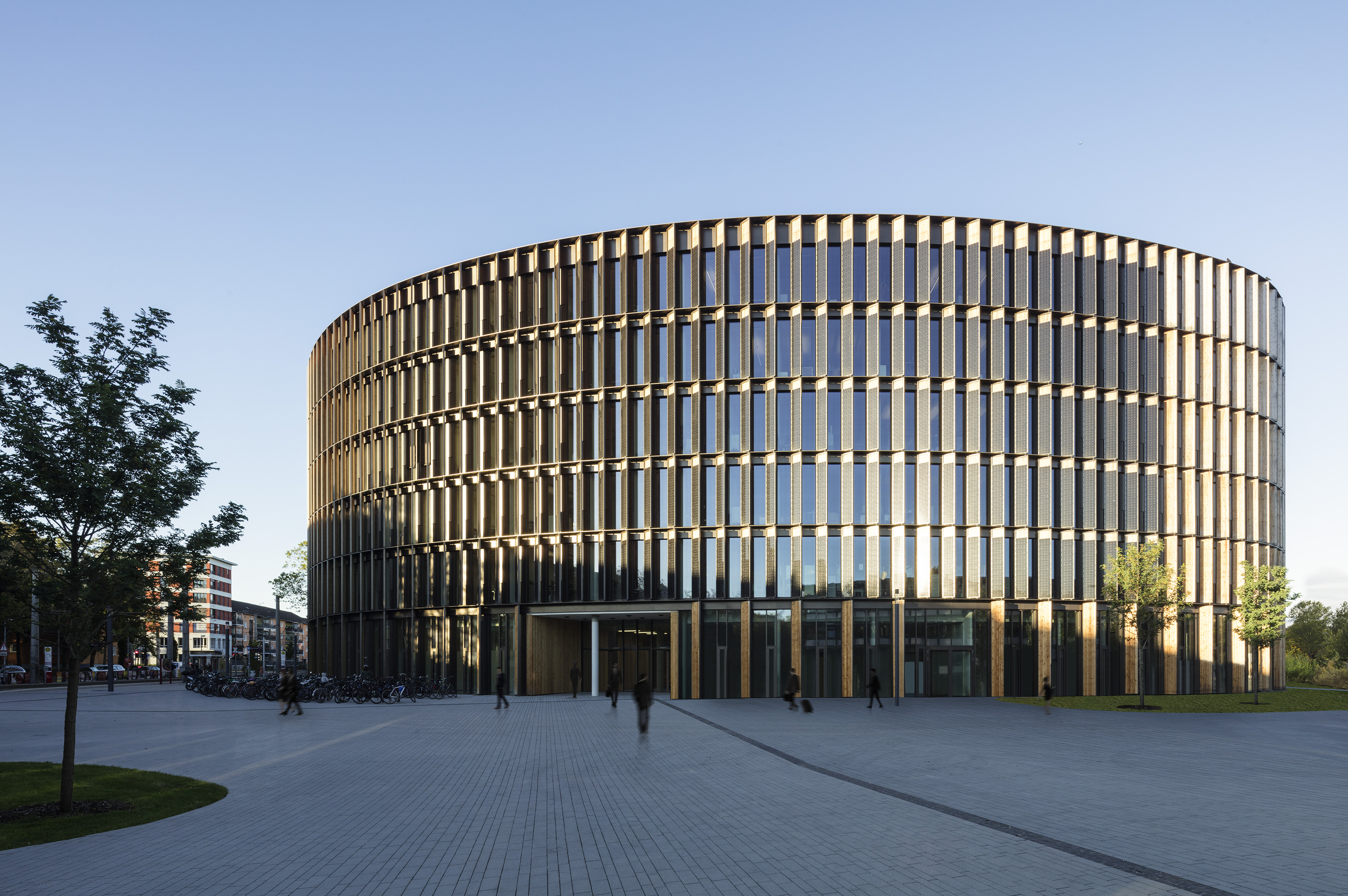
An island of liberalism in the conservative south, Freiburg is a charming university town and one of the warmest and most sustainable cities in Germany, where Mediterranean climes mean passive heating systems are the norm and trams trump cars at every turn. A medieval town sadly flattened by the war, its considerable cache of modern eco-friendly buildings has been augmented by a new town hall that situates it firmly on the map of cutting-edge green architecture.
The winner of the 2018 Balthasar Neumann award, the new Freiburg town hall by Ingenhoven Architects that opened last November has the feel of an eco-coliseum. A beacon of sustainability, with a skin of vertically staggered photovoltaic cells and locally sourced birch, its inner sanctum is a vaguely sci-fi feeling courtyard where domed skylights are flanked by indigenous grasses and plantings.
The pedestrian-level floors are glazed to promote a literal and figurative sense of transparency, while its roof boasts a giant oculus that opens up to a breathtaking view of the surrounding city. The world’s first public net-surplus-energy building also enjoys an adjacent day nursery – a kind of mini-me version of the town hall – and a public plaza.
Vaubon, Freiburg’s uber-green enclave that morphed from squatters’ communes to city-subsidised independent housing, is home to the groundbreaking Green City hotel (by Barkow Leibinger) as well as the red-toned cubed Montessori school by Spiecker Sauter Lauer.
A new tram stop and café with a distinctive curved roof on the edge of Freiburg’s historic district by J. MAYER H in partnership with Architekten structure will soon be complete.
And Dietenbach – a new district slated to be one of the biggest urban developments in Germany – will be located at the edge of the city centre, covering an area of 100 hectares, and promises to house up to 14,000 inhabitants in 5500 new sustainable dwellings.
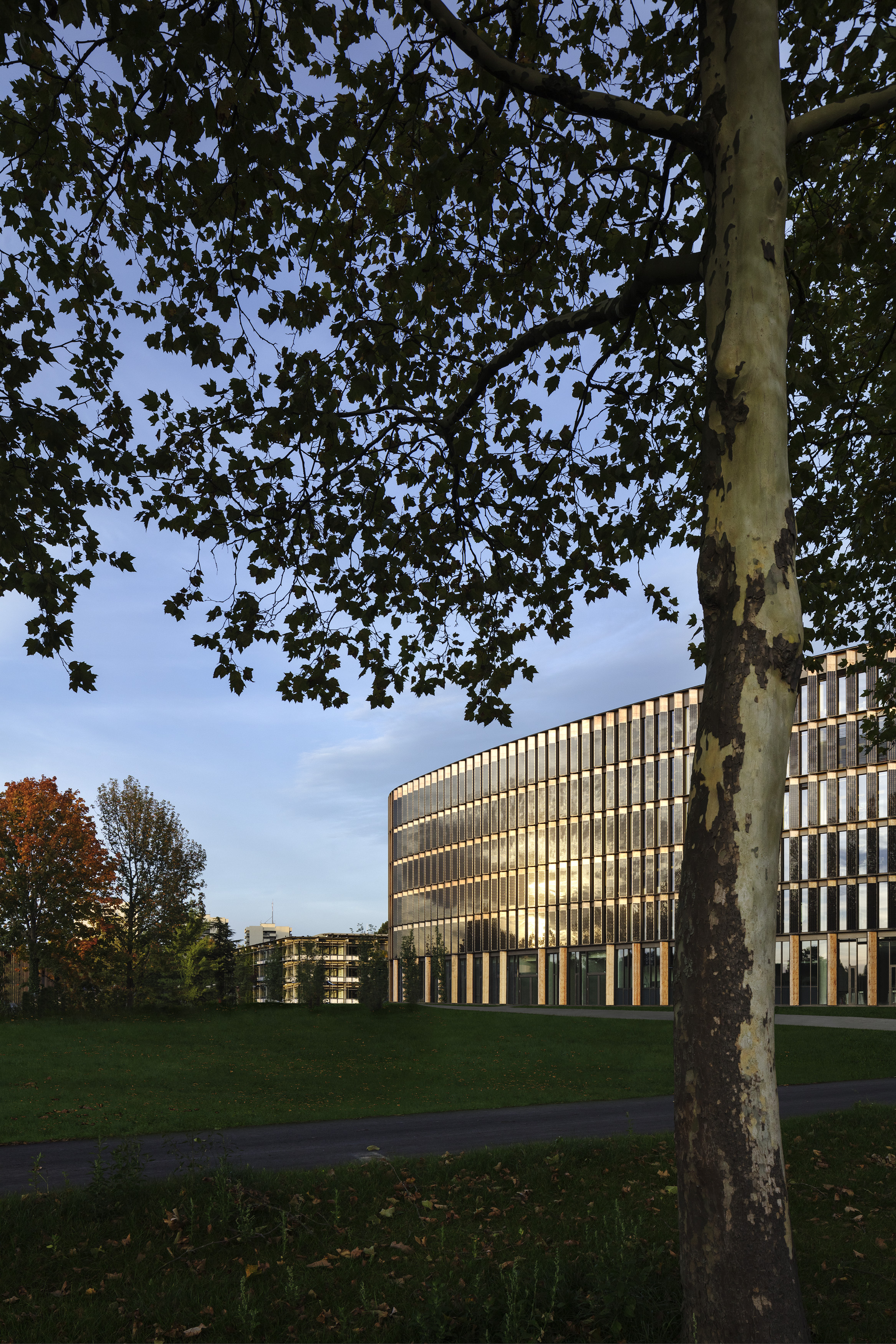
A 2018 Balthasar Neumann award winner, the Freiburg Town Hall by Ingenhoven Architects reads like an eco-coliseum.
While the future looks green, the past is alive and well at the edge of Freiburg’s oldest cemetery, where a new parish building by Stocker Dewes Architekten quietly pays homage to an adjacent mid-century church with skylights that open up to its bell tower, while medieval burial stones are displayed as installation art. The very touristic, historical old town is brought into the 21st century by the 2016 Degelo Architekten + IttenbrechBühl library – which sits across from a plaza that was the former site of the city’s 19th-century synagogue (destroyed during Kristallnacht), now transformed into a memorial fountain.
Meanwhile in Wiehre, the upscale 19th-century residential district established by silver miners (that escaped the worst of the Second World War bombing) turned bohemian design enclave, Germany’s oldest and only women’s schwimmbad (swimming pool) offers the option of a refreshing dip, while 500 metres away, refugee housing by Stocker Dewes offers succour to those fleeing war zones.
Overlooking the city from its scenic foothills, Germany’s first United World College was built (by Peter Kulka Architektur and Hotz + Architekten) on the bones of a Carthusian monastery. Energy efficient cube-shaped student residences offer a Bauhaus inspired vision of an idyllic international and sustainable community, where sheep graze amidst modernist monastic interventions and a sweeping view of the city of the future below.
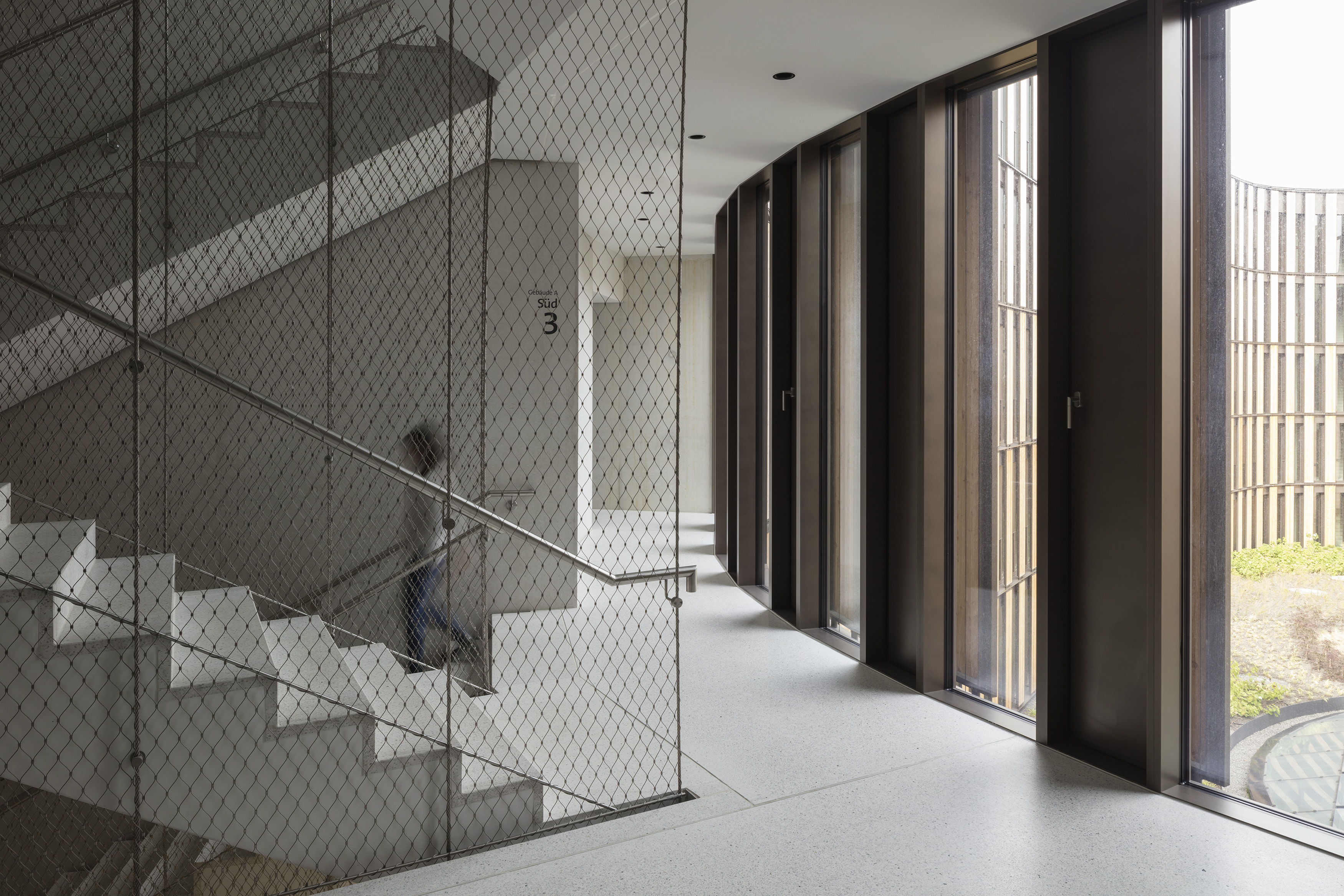
Freiburg Town Hall by Ingenhoven Architects
A beacon of sustainability, with a skin of vertically staggered photovoltaic cells and locally sourced birch, this is the world’s first public net-surplus-energy building.
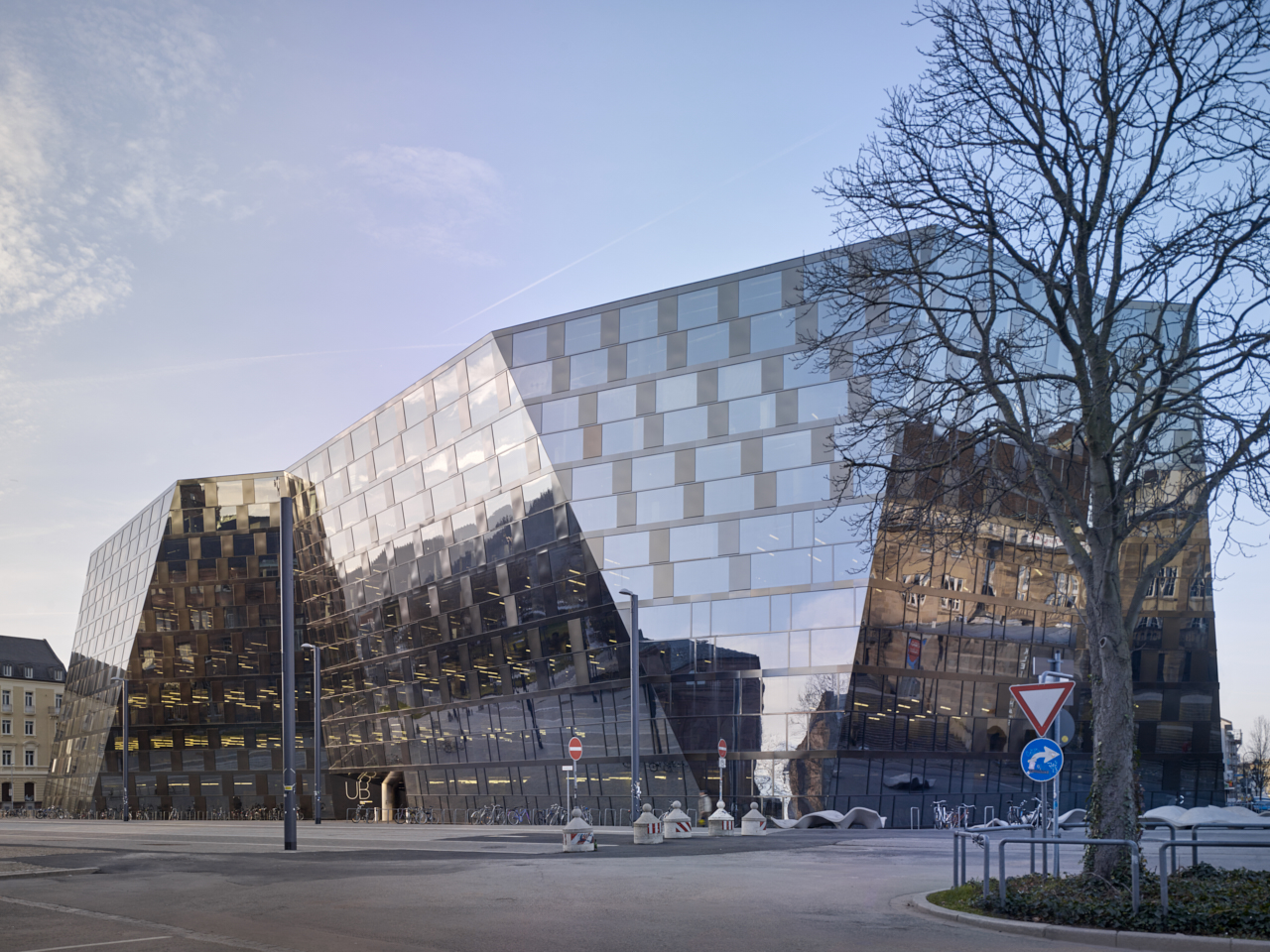
Freiburg City Library by Degelo Architects
This 2016 project by Degelo Architects took down parts of the original 1970’s library, streamlining it and reshaping it into an energy efficient urban jewel.
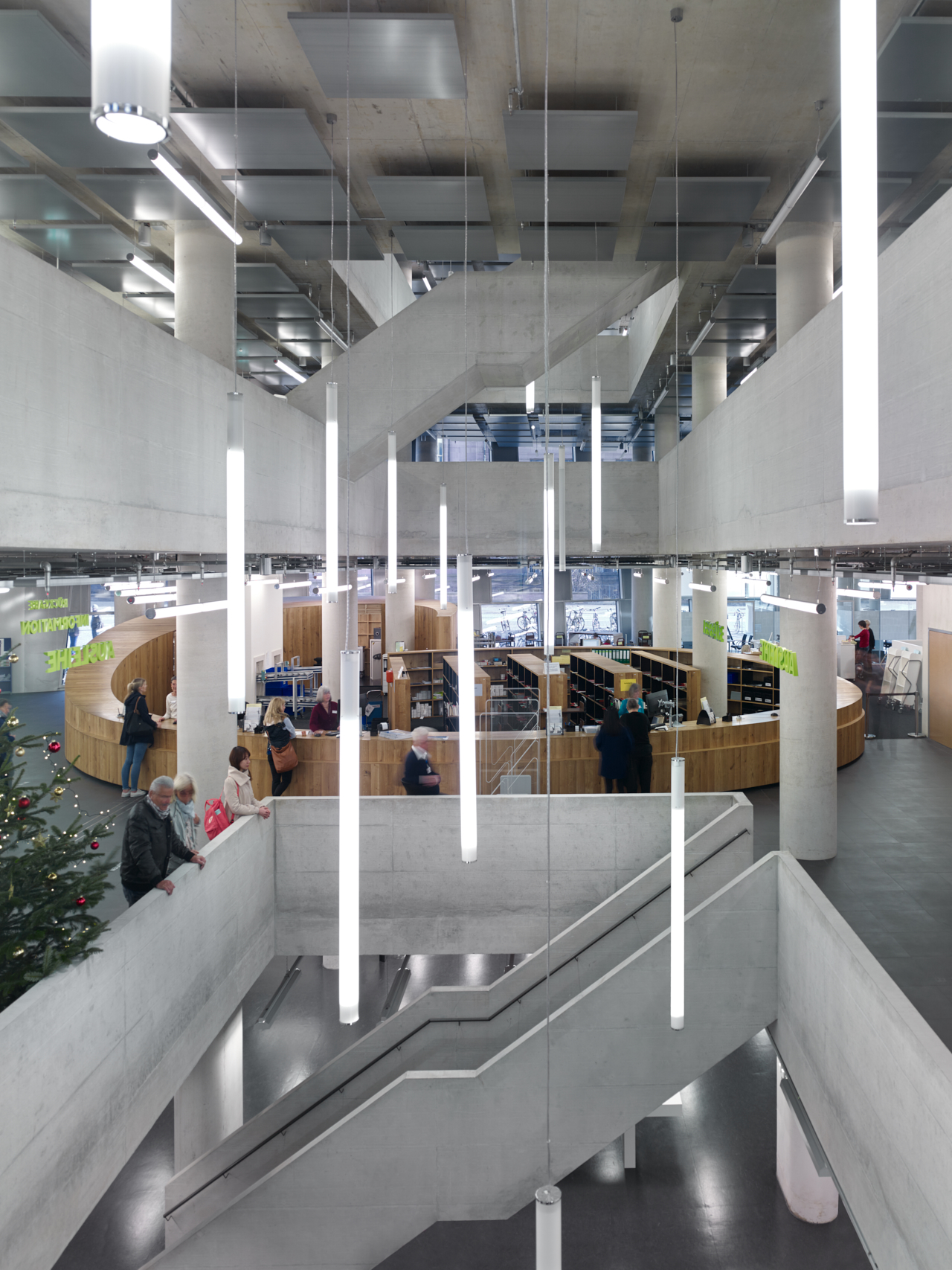
Freiburg City Library by Degelo Architects
The diamond like façade of electrochemically treated chrome steel becomes a two way mirror – reflecting both the historic buildings around it and revealing its interior activities.
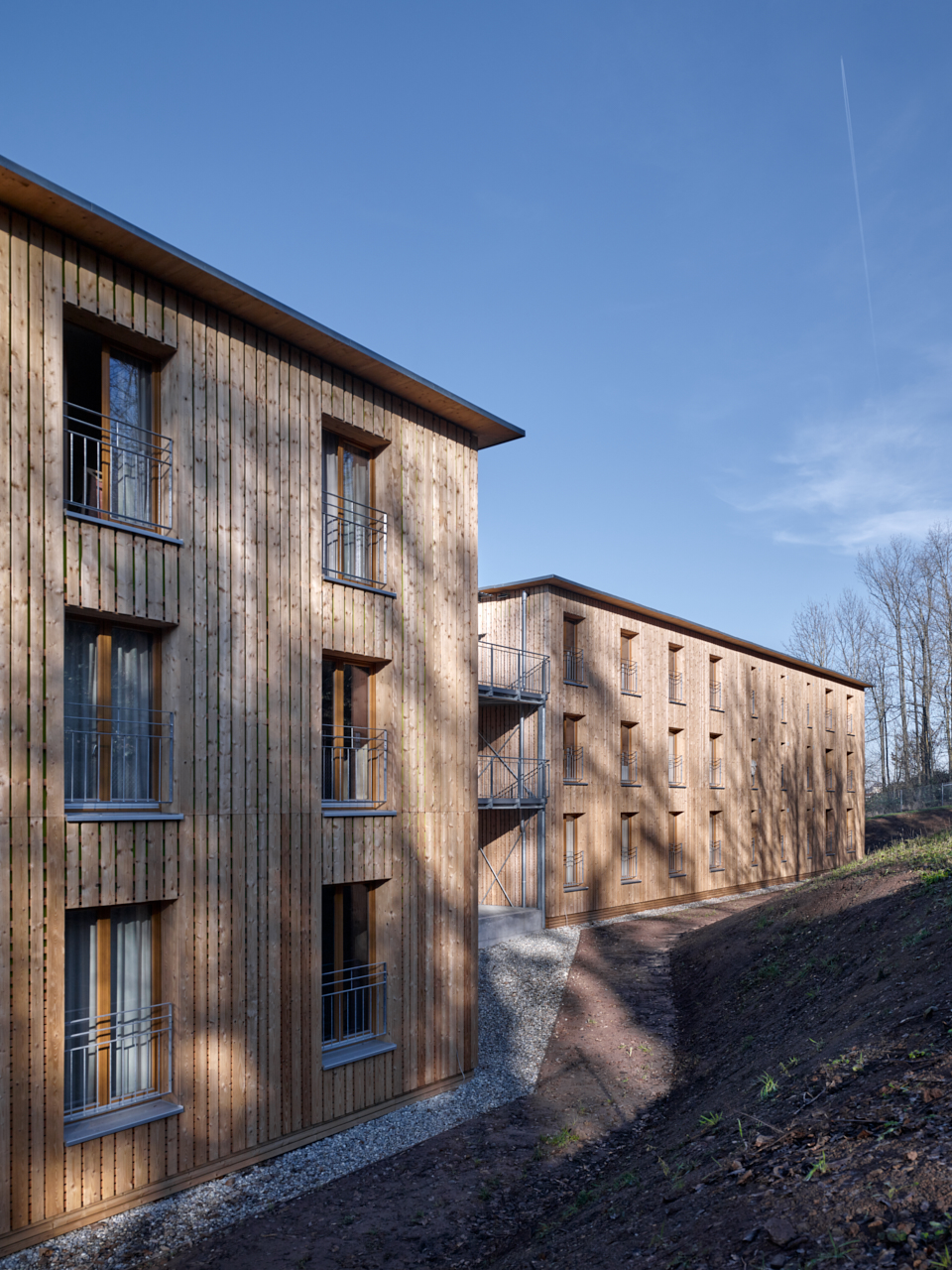
Refugee housing by Stocker Dewes Architekten
Located in the upscale residential neighbourhood of Wiehre, this housing project is in keeping with the city’s plan to integrate refugees rather than isolate them.
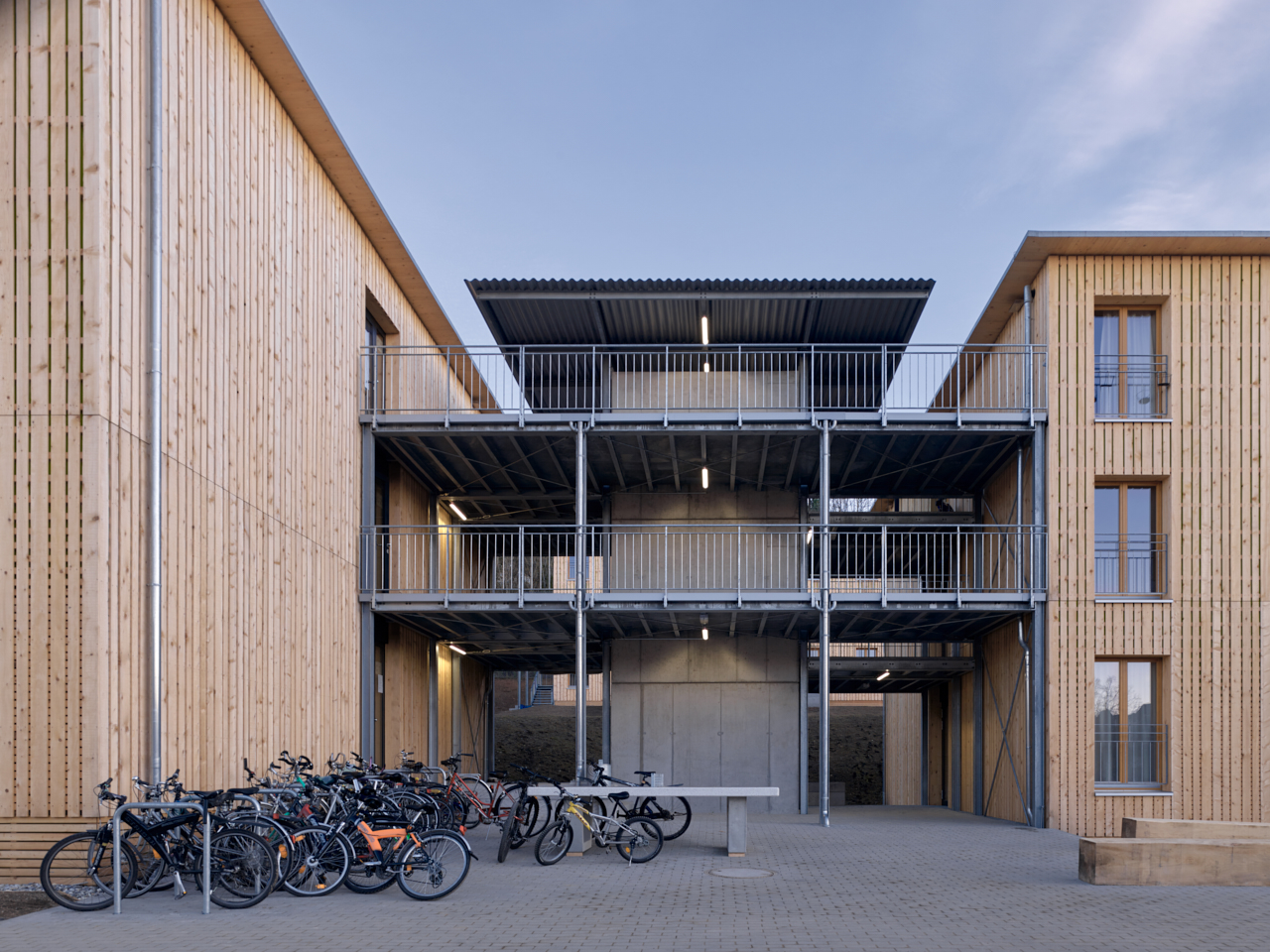
Refugee housing by Stocker Dewes Architekten
The simple yet sociable design by Stocker Dewes Architekten offers privacy and community to those seeking refuge from war torn homelands.
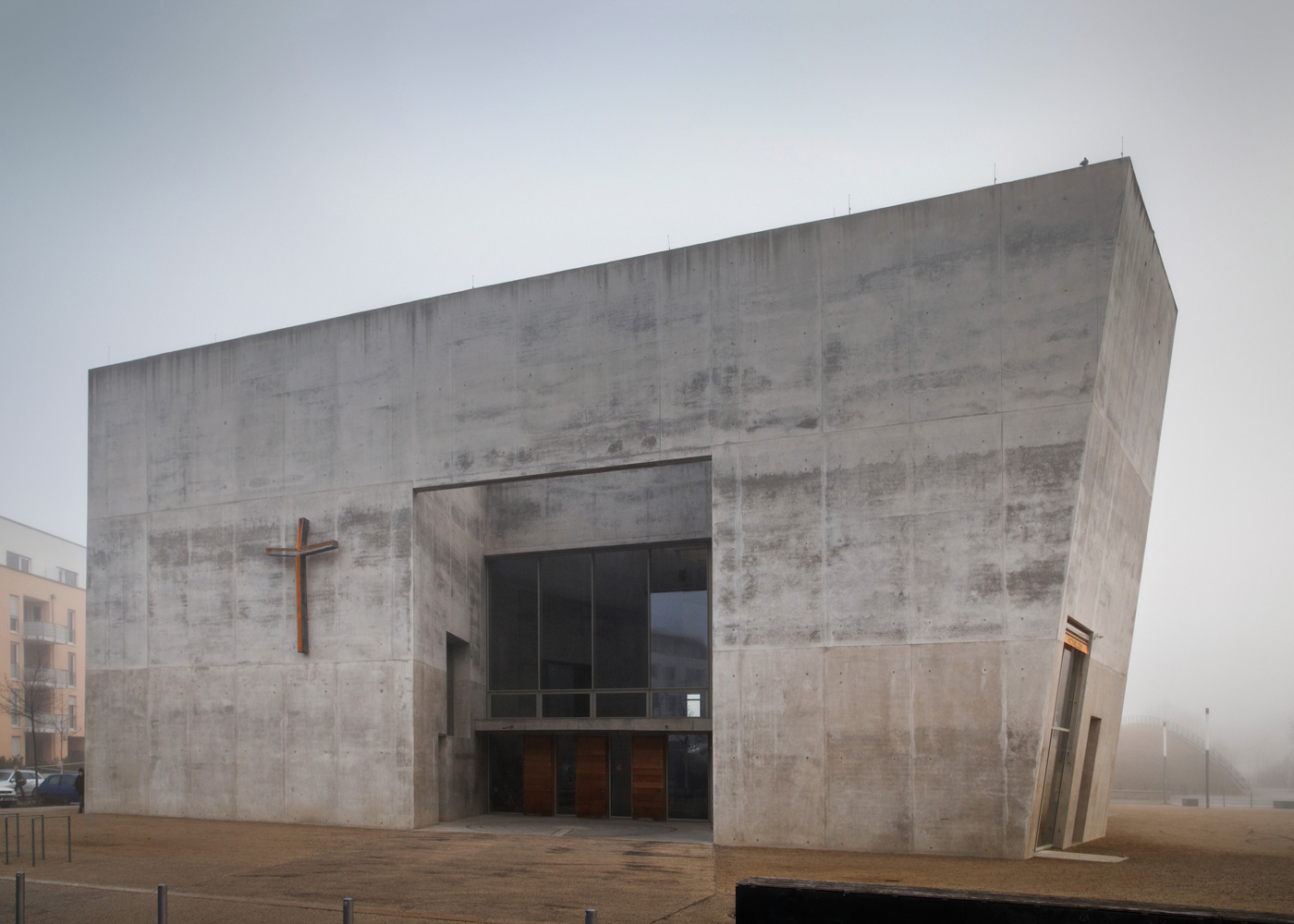
Maria Magdalena Church / Double Church For Two Faiths by KSG Architekten
This architectural ode to cross denominational harmony contains a Protestant and a Catholic church in a single building.
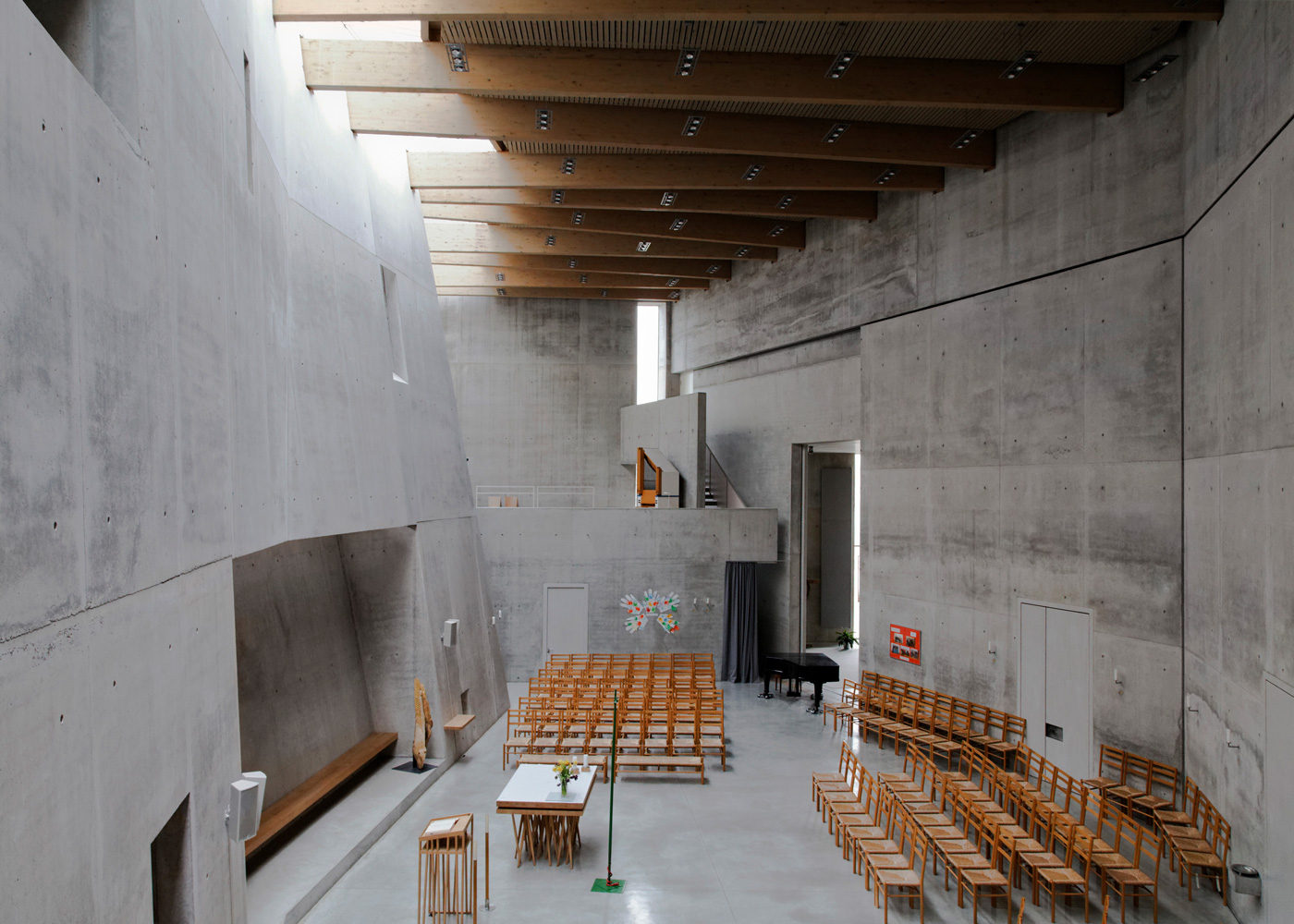
Maria Magdalena Church / Double Church For Two Faiths by KSG Architekten
Employing a kind of flexible brutalism and sophisticated engineering, KSG Architekten has created a multi-aisle structure with moveable inner walls that can make way for single ecumenical church space.
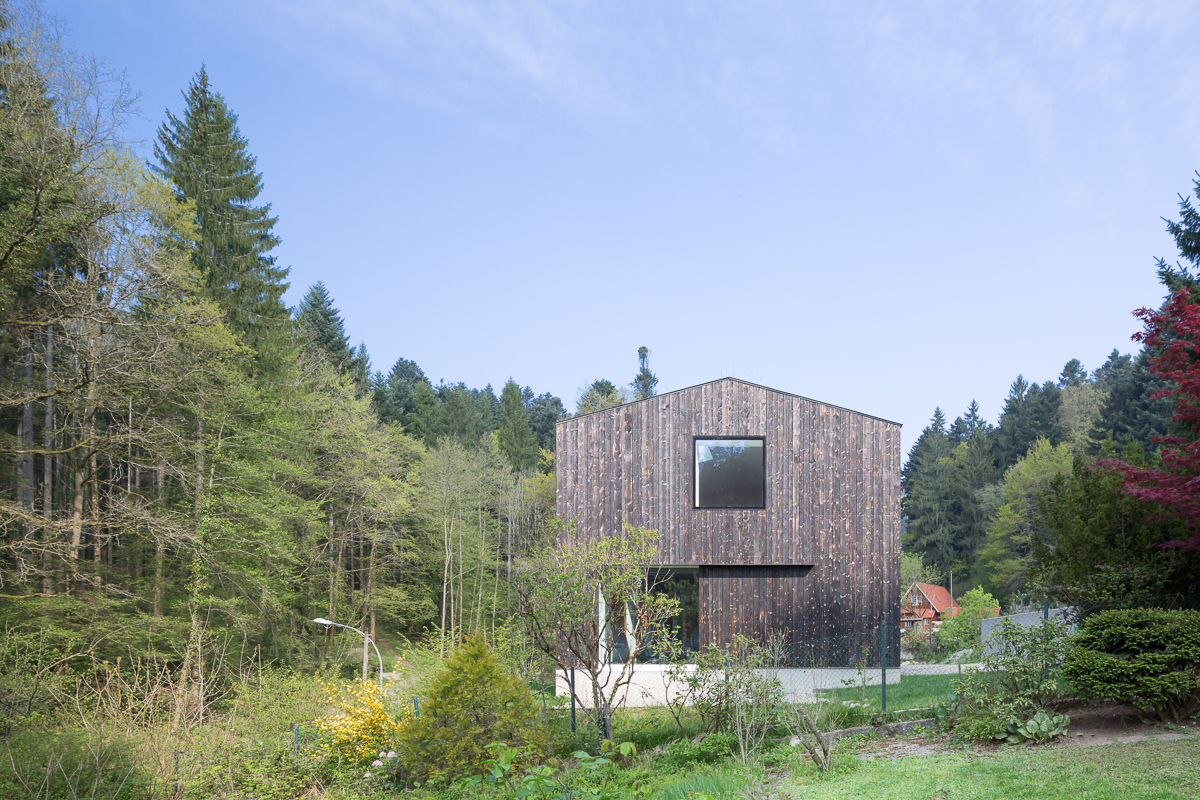
Black Forest House by Stocker Dewes Architekten
The husband and wife team of Stocker Dewes Architekten created their combined home/office space at the edge of the Black Forest from the bones of an old horse stable.
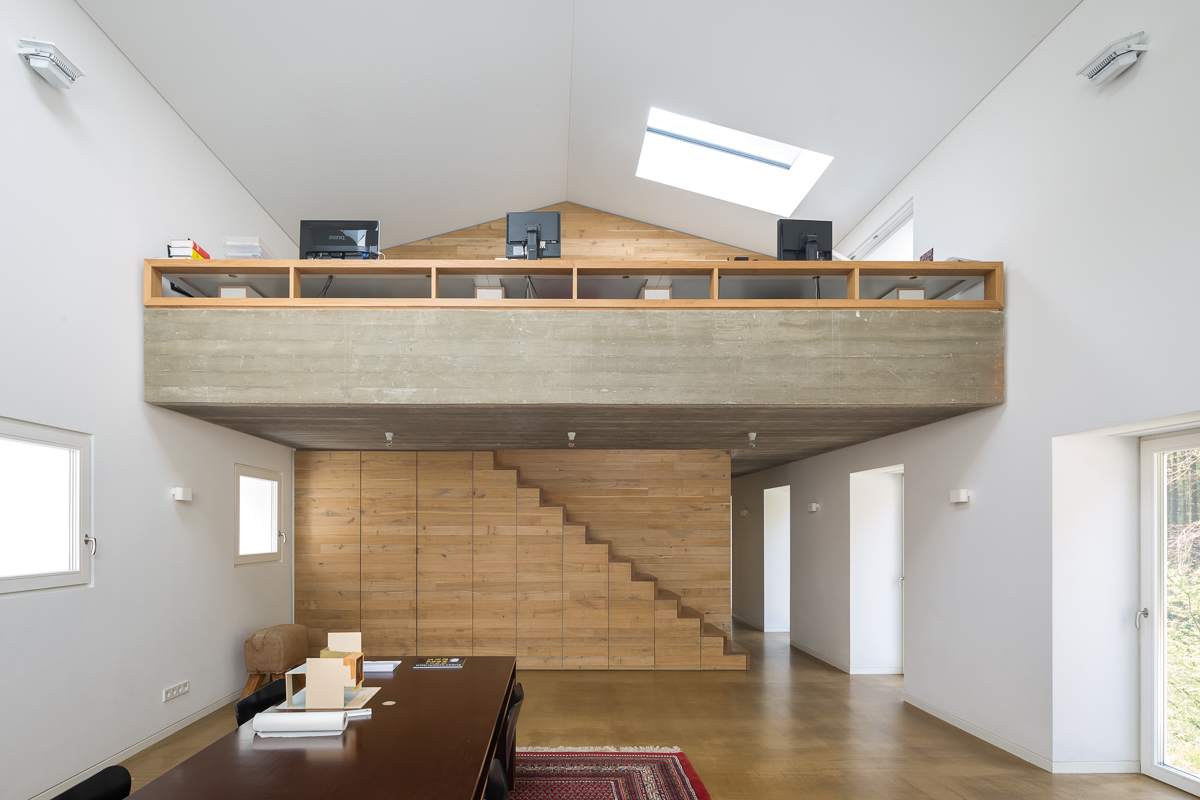
Black Forest House by Stocker Dewes Architekten
The work/living space is delineated by an interior wall/stairwell that separates the two functions, even as a long corridor unites them. Clad in wavy grain wood to complement the surrounding environment, the forest is brought inside by extensive glazing.
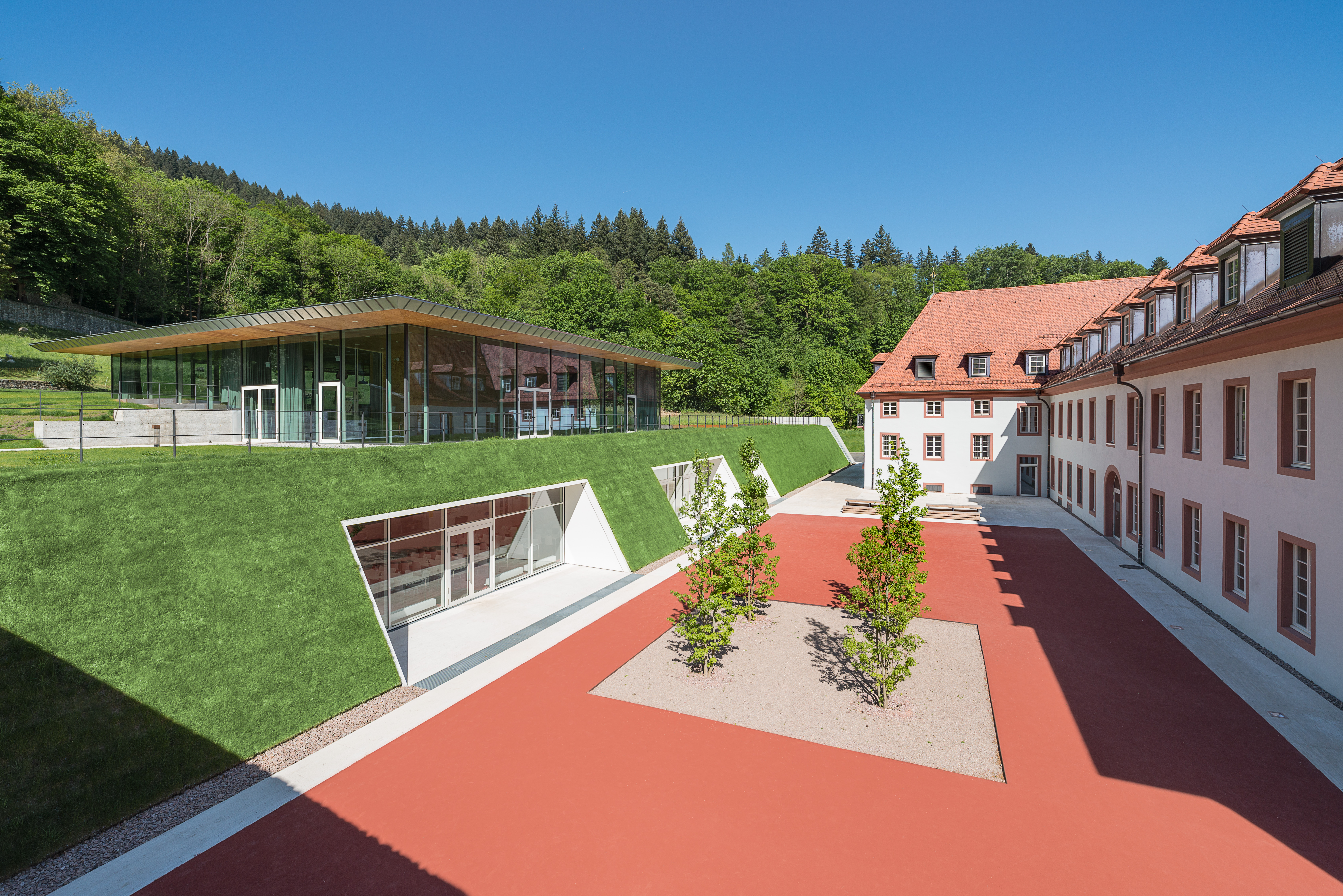
United World College by Peter Kulka Architektur and Hotz + Architekten
Germany’s first United World College was built (by Peter Kulka Architektur and Hotz + Architekten) on the bones of a Carthusian monastery.
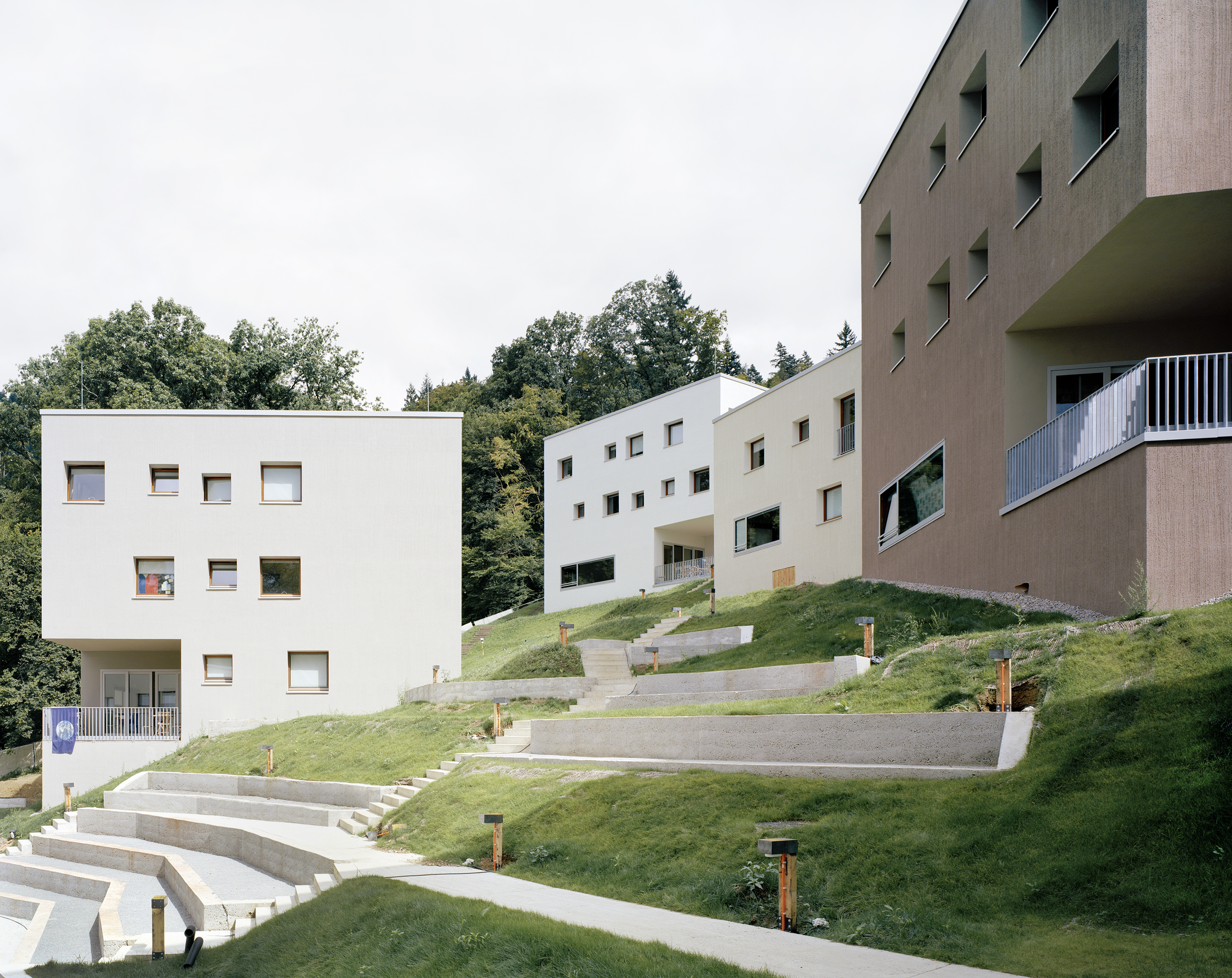
United World College by Peter Kulka Architektur and Hotz + Architekten
Now, energy efficient cube shaped student residences offer a Bauhaus inspired vision of an idyllic international and sustainable community.
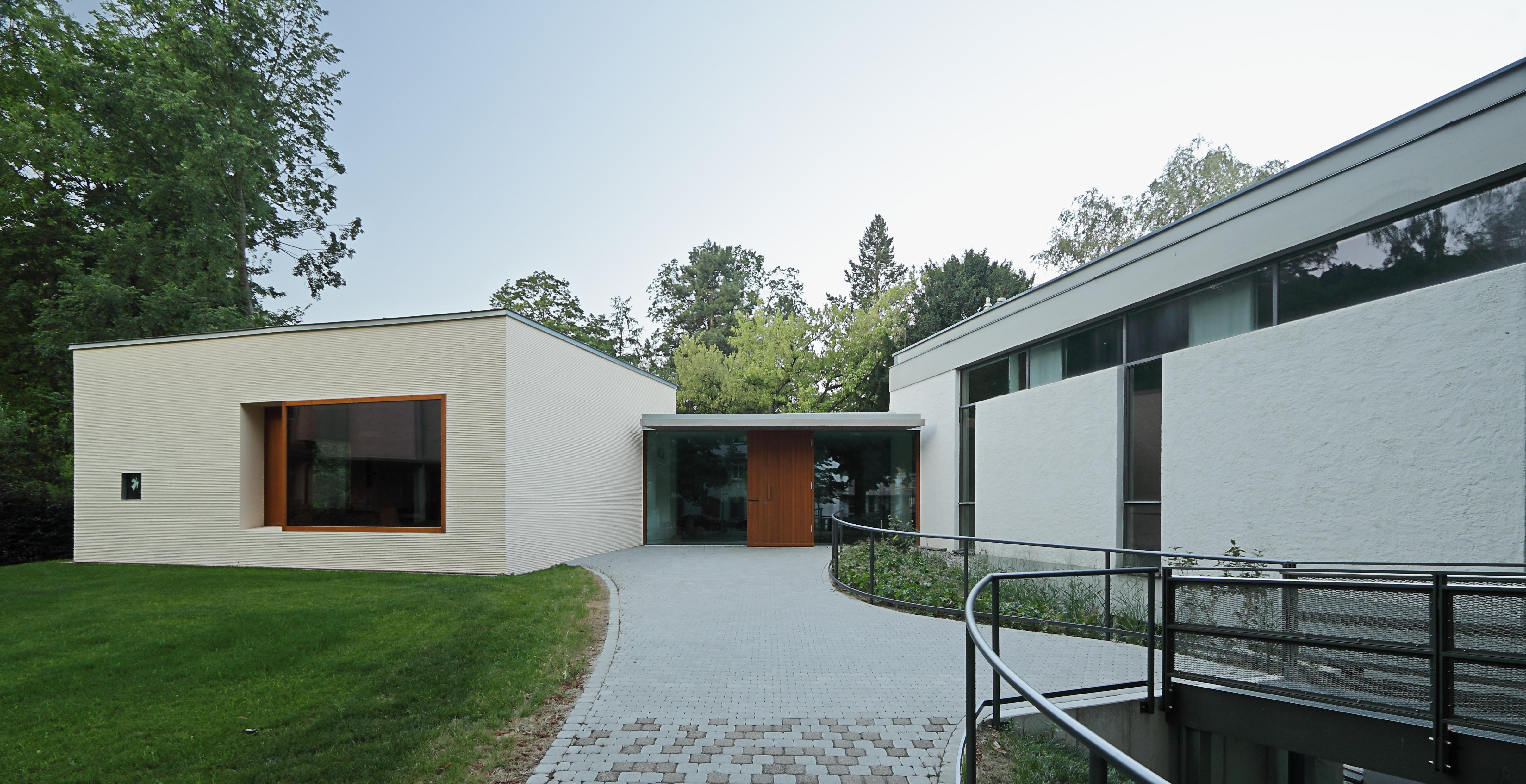
die evangelische Pfarrgemeinde Nord by Stocker Dewes Architekten
At the edge of Freiburg’s oldest cemetery, a new parish building by Stocker Dewes Architekten pays homage to the adjacent mid-century Ludwigskirche church.
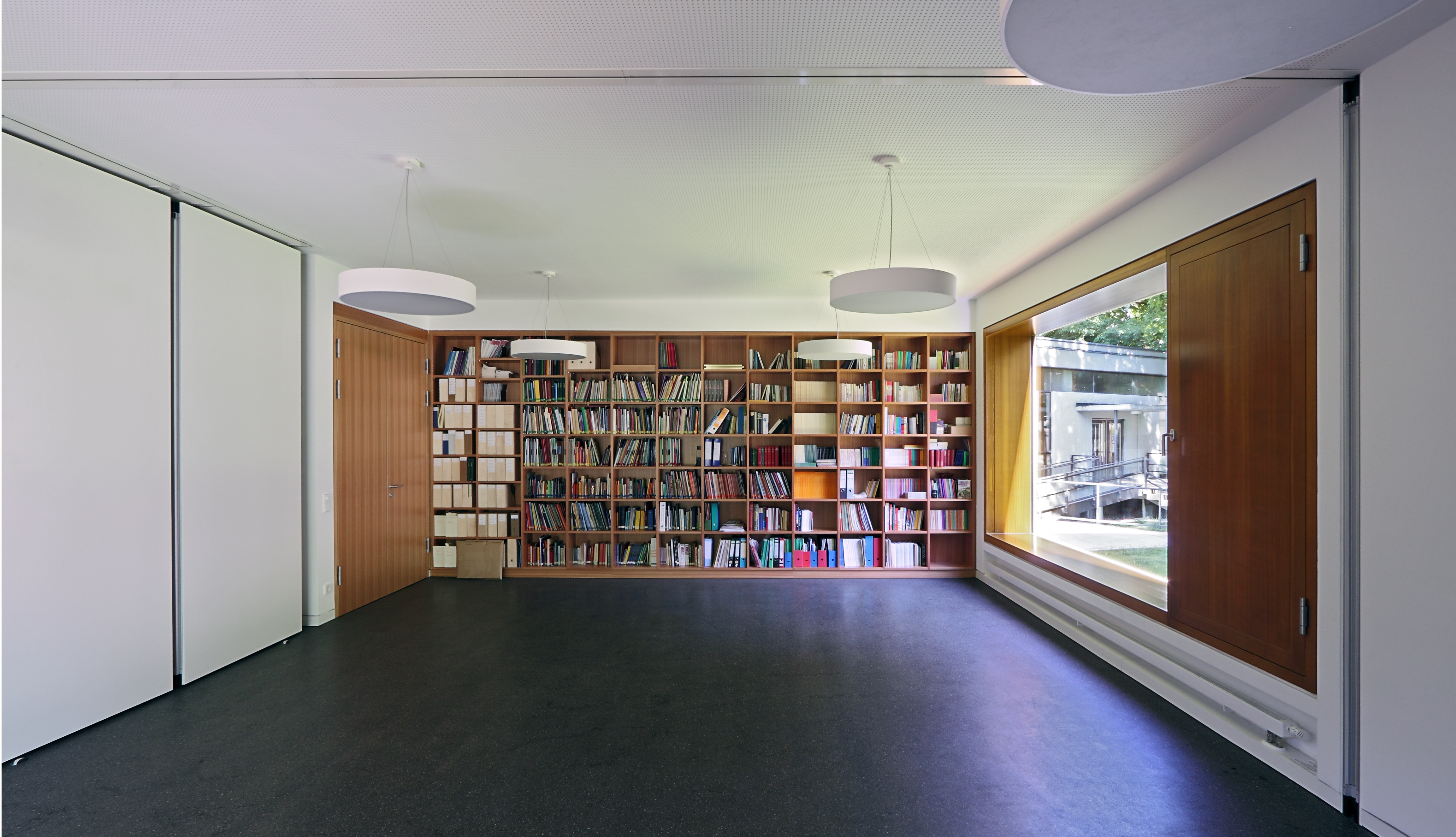
die evangelische Pfarrgemeinde Nord by Stocker Dewes Architekten
The structure features skylights that open up to its bell tower, and a sober yet luminescent interior.
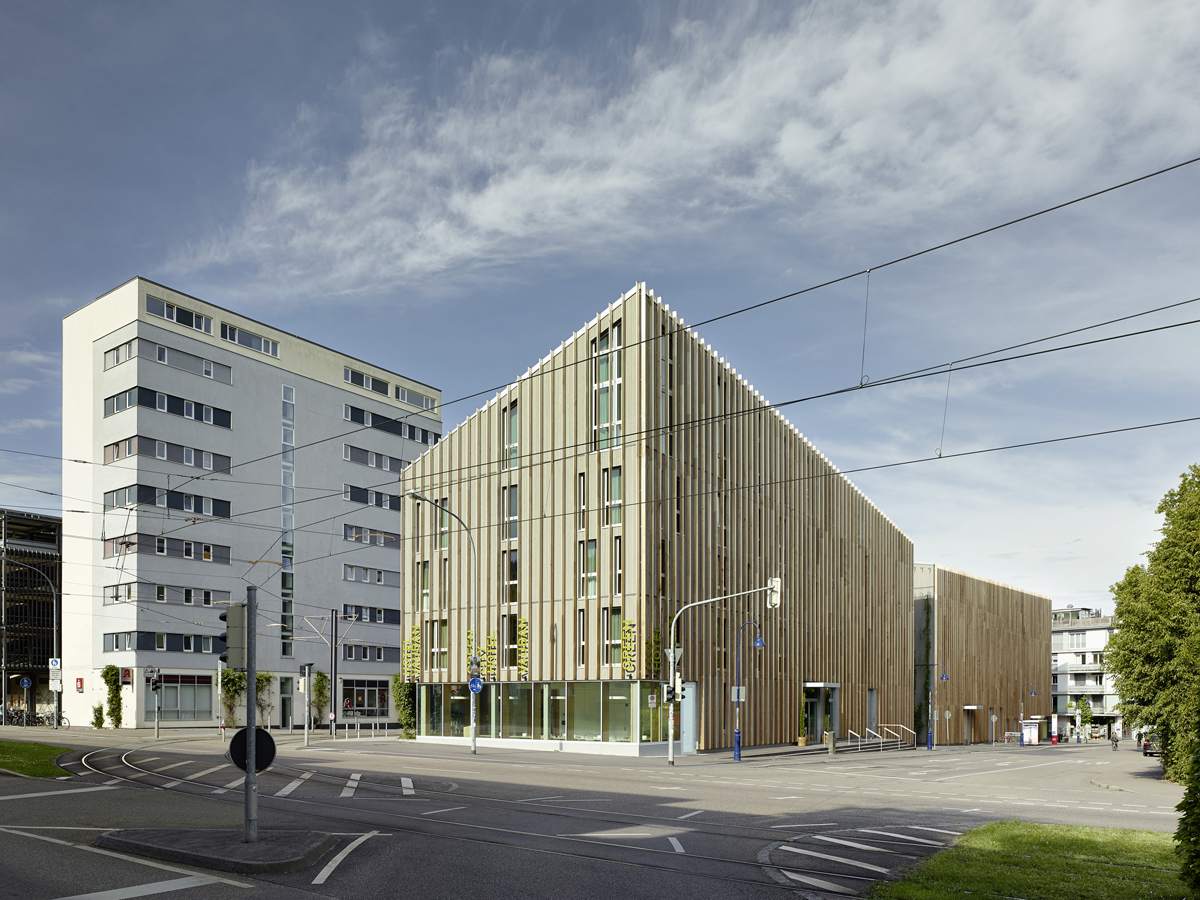
Green City Hotel Vauban by Barkow Leibinger
In Freiburg’s sustainable car free neighbourhood of Vaubon, the ’living wall’ clad Green City Hotel combines green architecture and social responsibility. Employing people with disabilities, and a simple palette of stone glass and wood, this hotel offers eco-hospitality at its best.
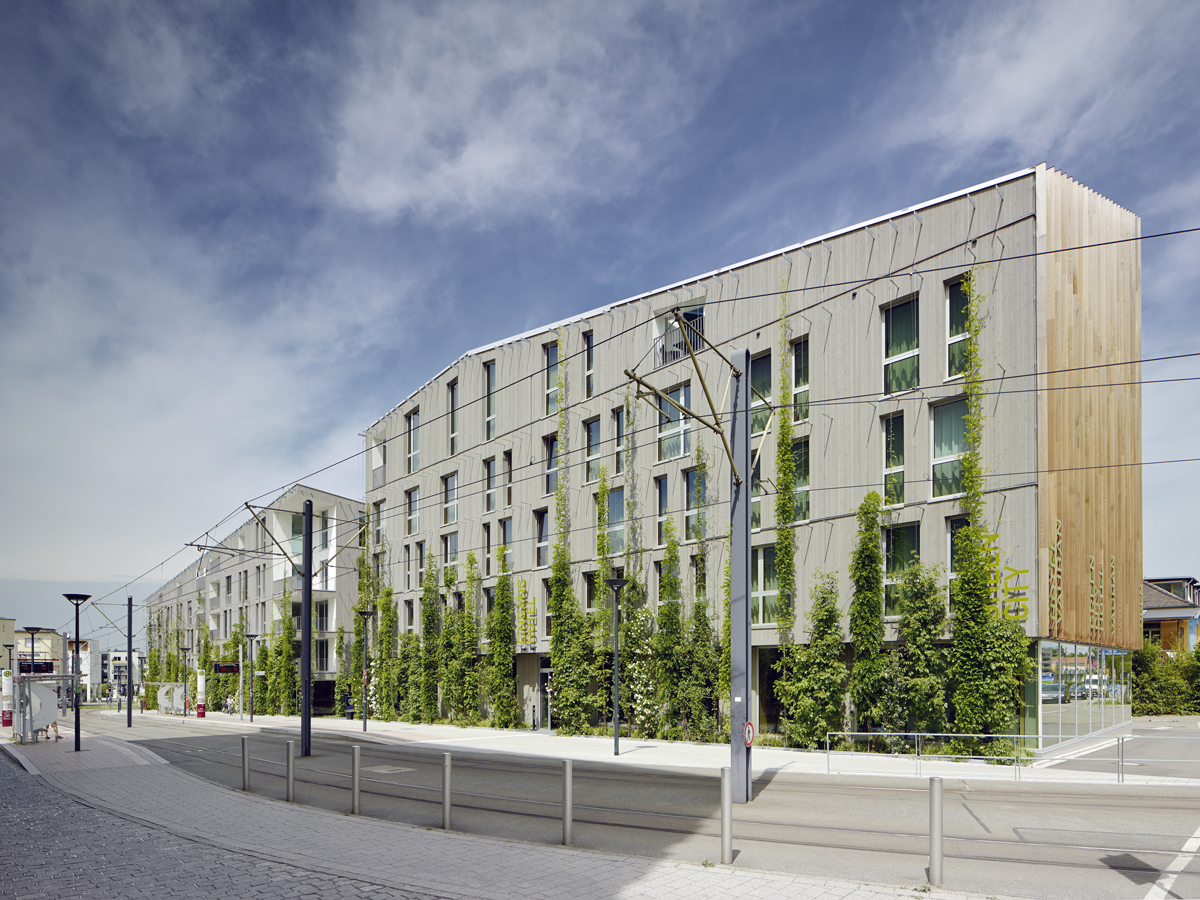
Green City Hotel Vauban by Barkow Leibinger
Large punched out windows in the lobby bring the outside in, while green furniture and plantings add colour to match the living wall outside.
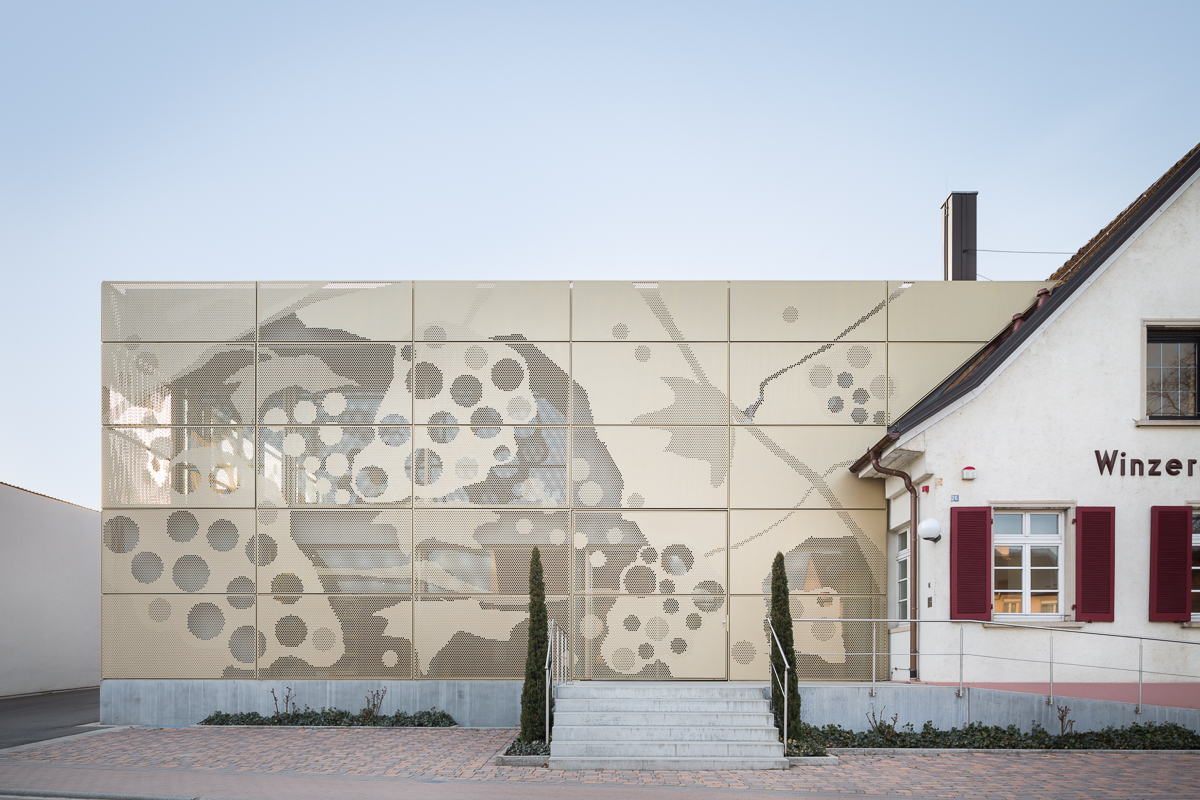
Sasbach Winery by ABMP Architekten
In nearby Sasbach, this winery by ABMP Architekten combines a fairy tale style original weinhaus with a modern building offering more room for storage and tastings.
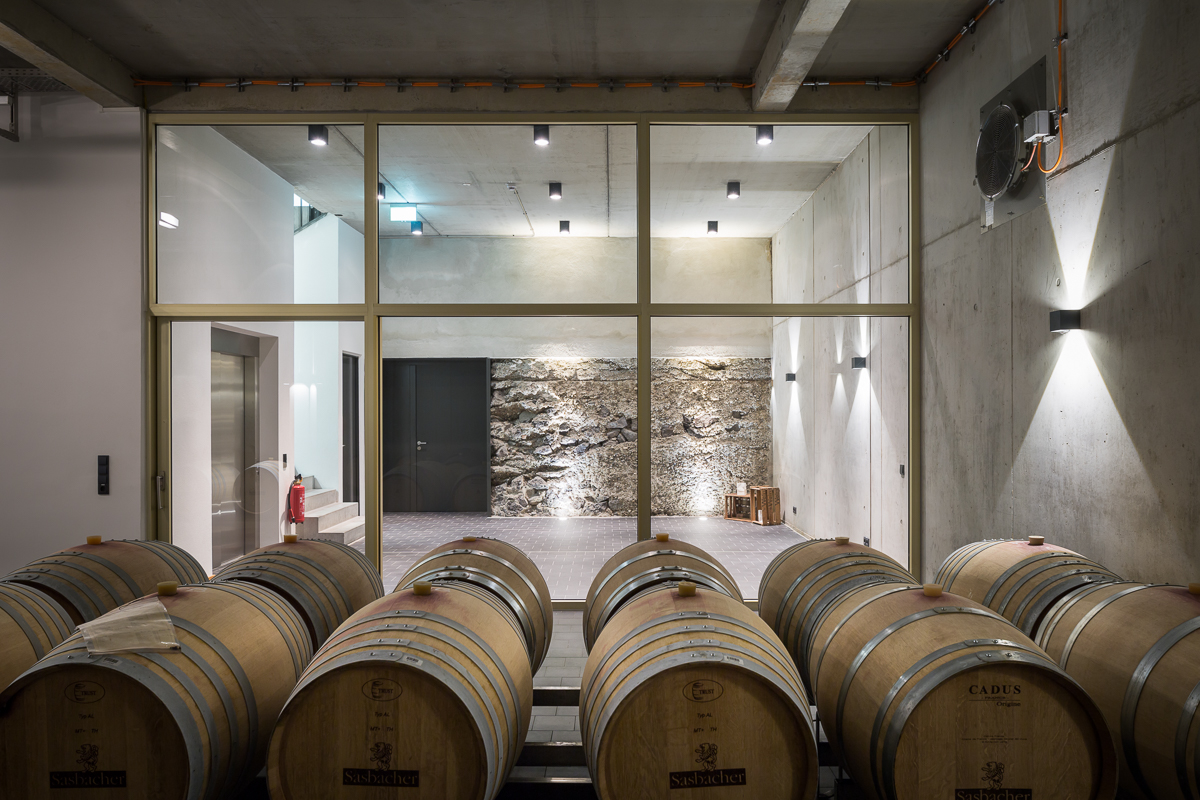
Sasbach Winery by ABMP Architekten
Reflecting the evolution of viticulture, the winery morphs from Black Forest vernacular to sleek concrete flooring and metal cladding.
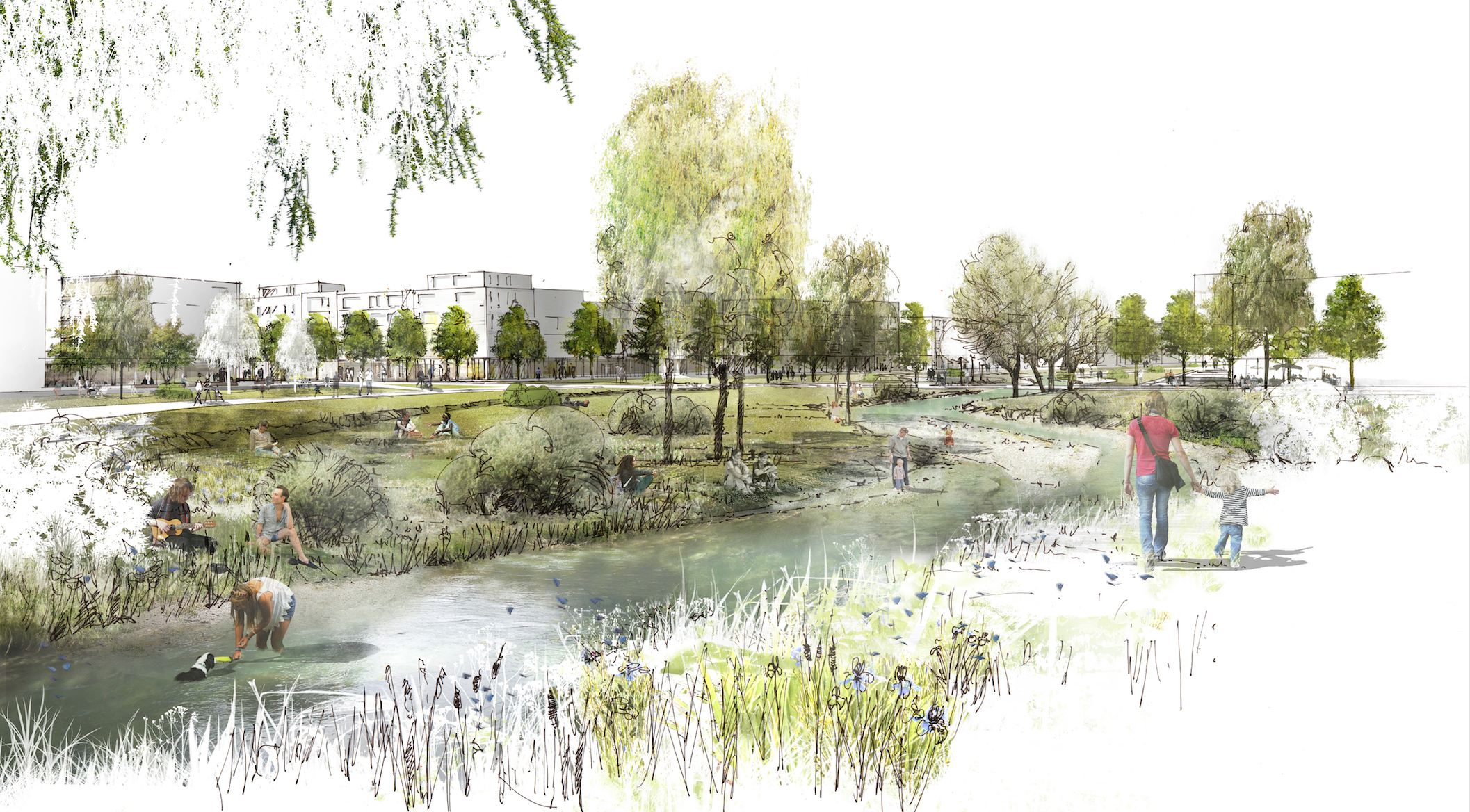
Dietenbach District (various architects)
Dietenbach, a new district slated to be one of the biggest urban developments in Germany – will be located at the edge of the city center, covering an area of 100ha, and promises to house up to 14.000 inhabitants in 5500 new sustainable dwellings.
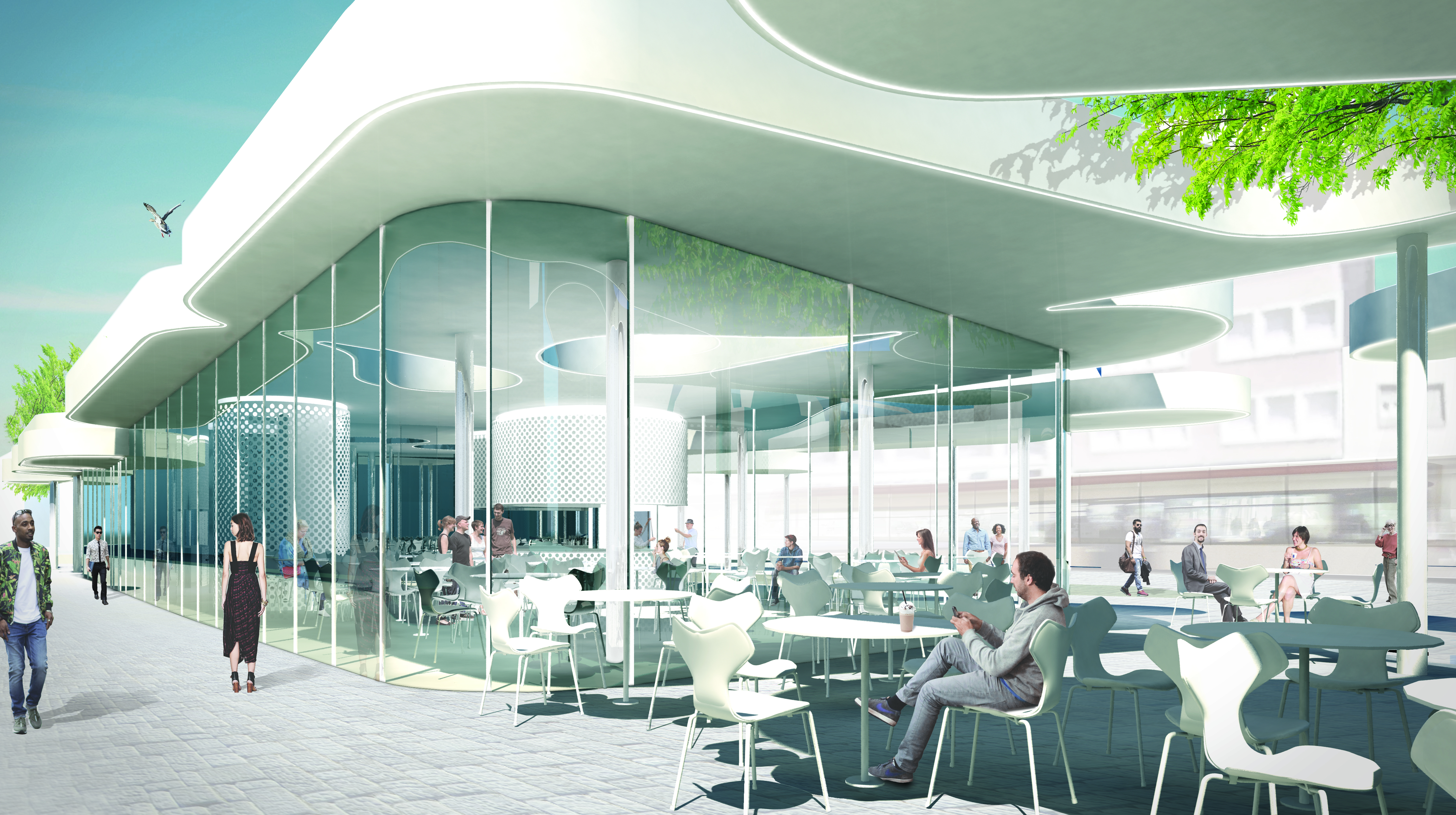
Tram stop and Café by J. Mayer. H.
Located at the edge of Freiburg’s historic district, this new tram stop boasts a dynamic, undulating roof structure.
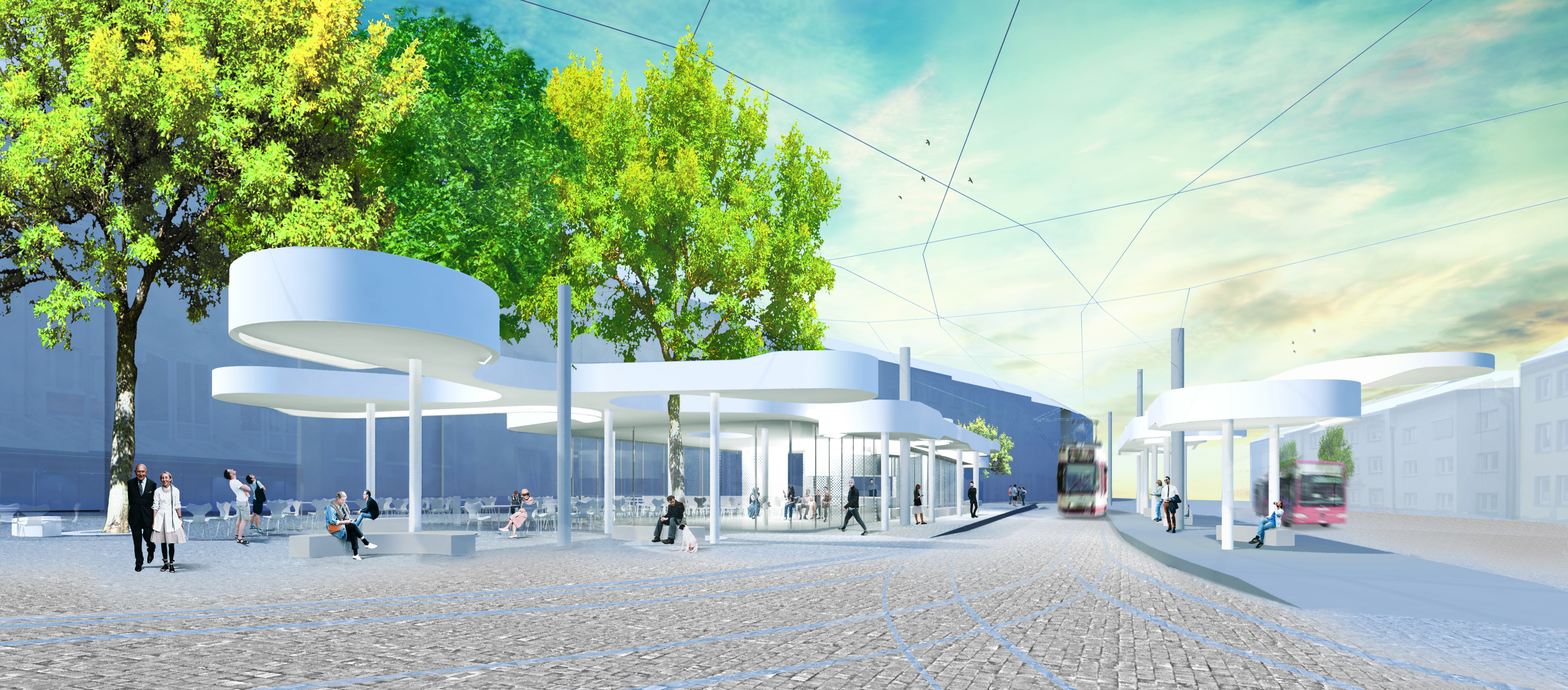
Tram stop and Café by J. Mayer. H.
An adjoining café features floor to ceiling glazing and circular white mesh interior fixtures. The project is due for completion in spring 2019.
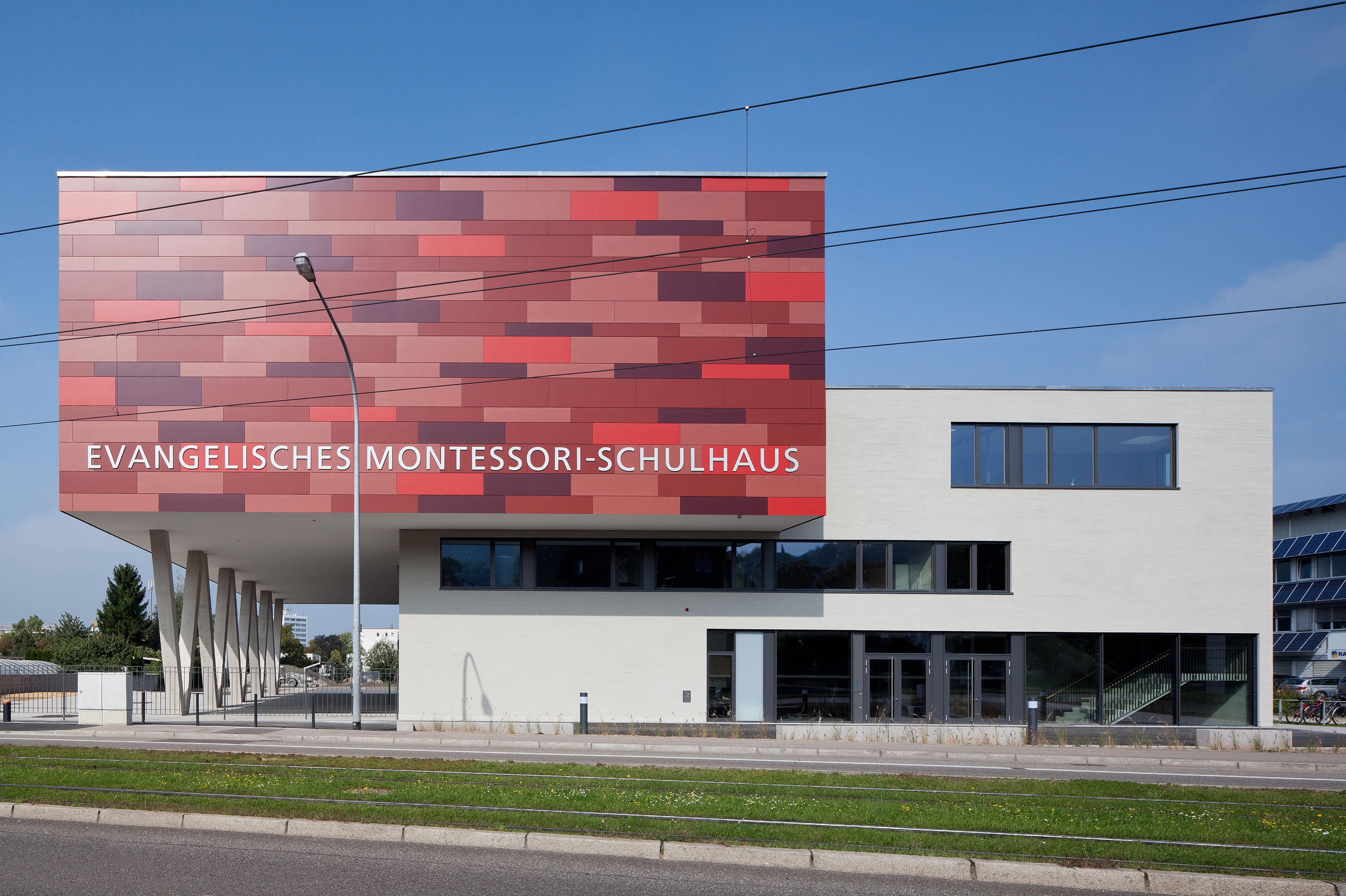
Protestant Montessori School by Spiecker Sauter Lauer
This Montessori school by Spiecker Sauter Lauer packs a lot of building onto a small lot. It’s notable for its mottled red concrete cube that appears to float over the street, supported only by thin diagonal columns.
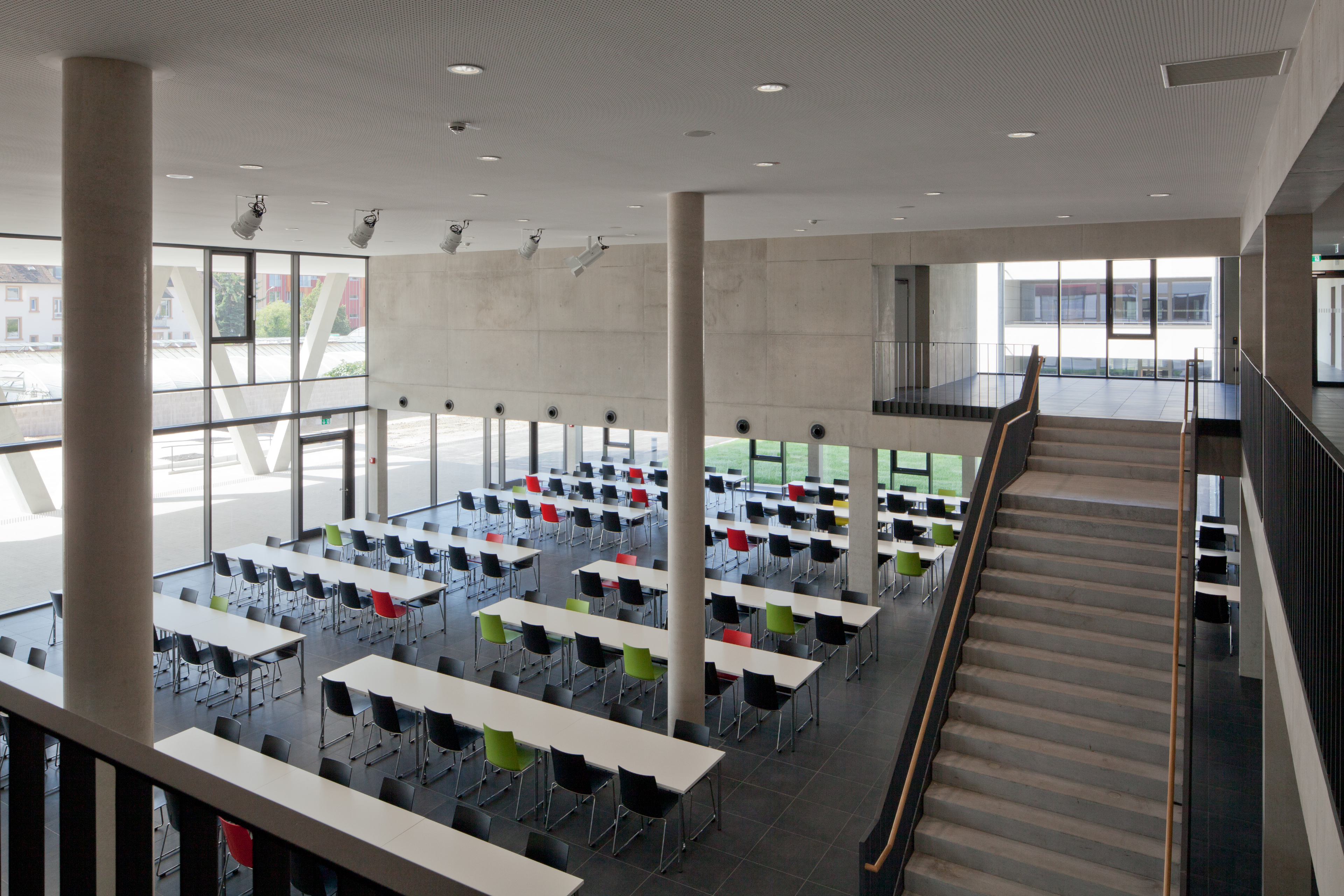
Protestant Montessori School by Spiecker Sauter Lauer
Open interior spaces reflect the Montessori concept of flexible learning environments.
Wallpaper* Newsletter
Receive our daily digest of inspiration, escapism and design stories from around the world direct to your inbox.
-
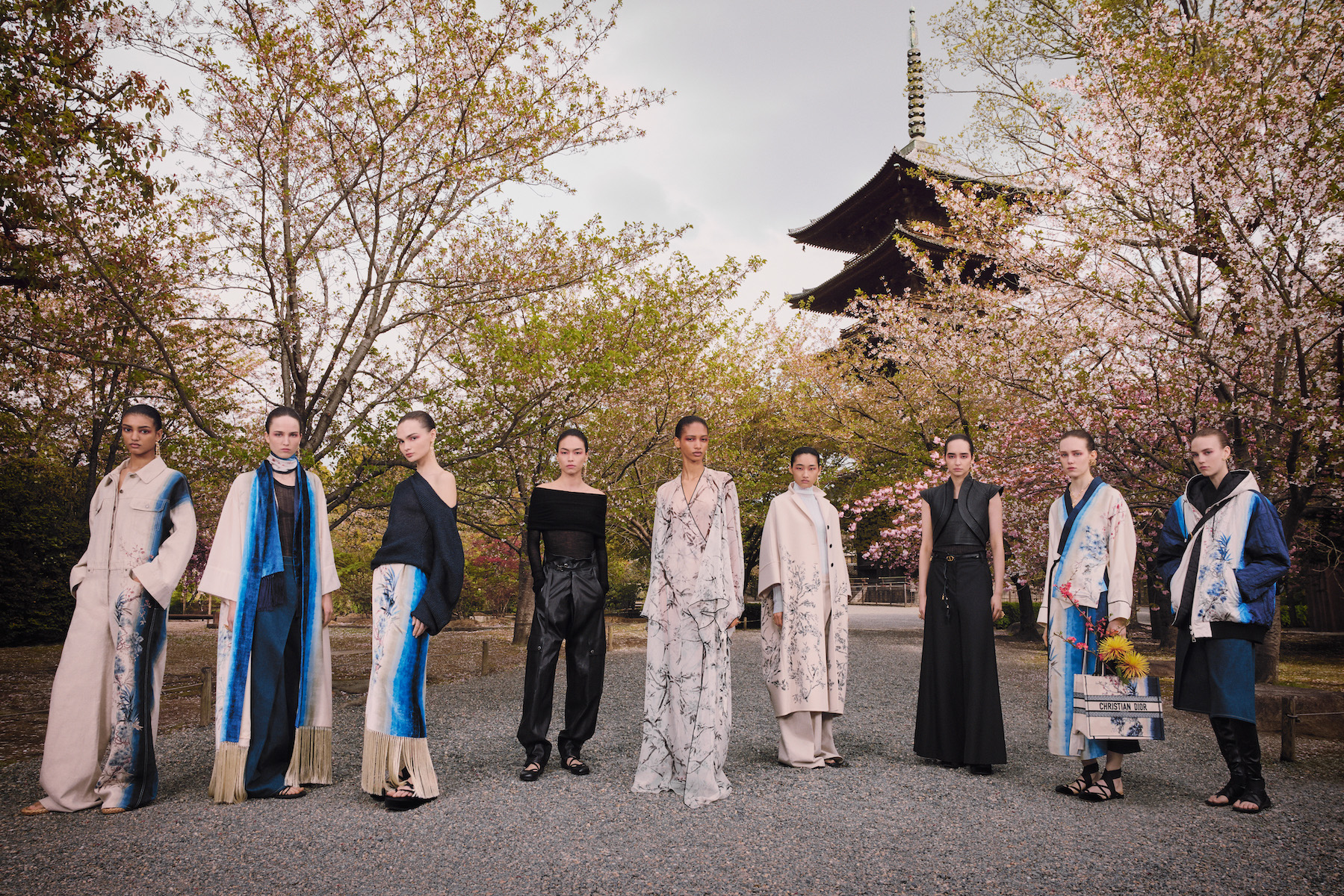 Dior holds an enchanting Kyoto show in the midst of cherry-blossom season
Dior holds an enchanting Kyoto show in the midst of cherry-blossom seasonMaria Grazia Chiuri chose the grounds of Kyoto’s serene Tō-ji Temple to present a Fall 2025 collection that celebrated Dior’s longstanding links with Japan
By Jack Moss
-
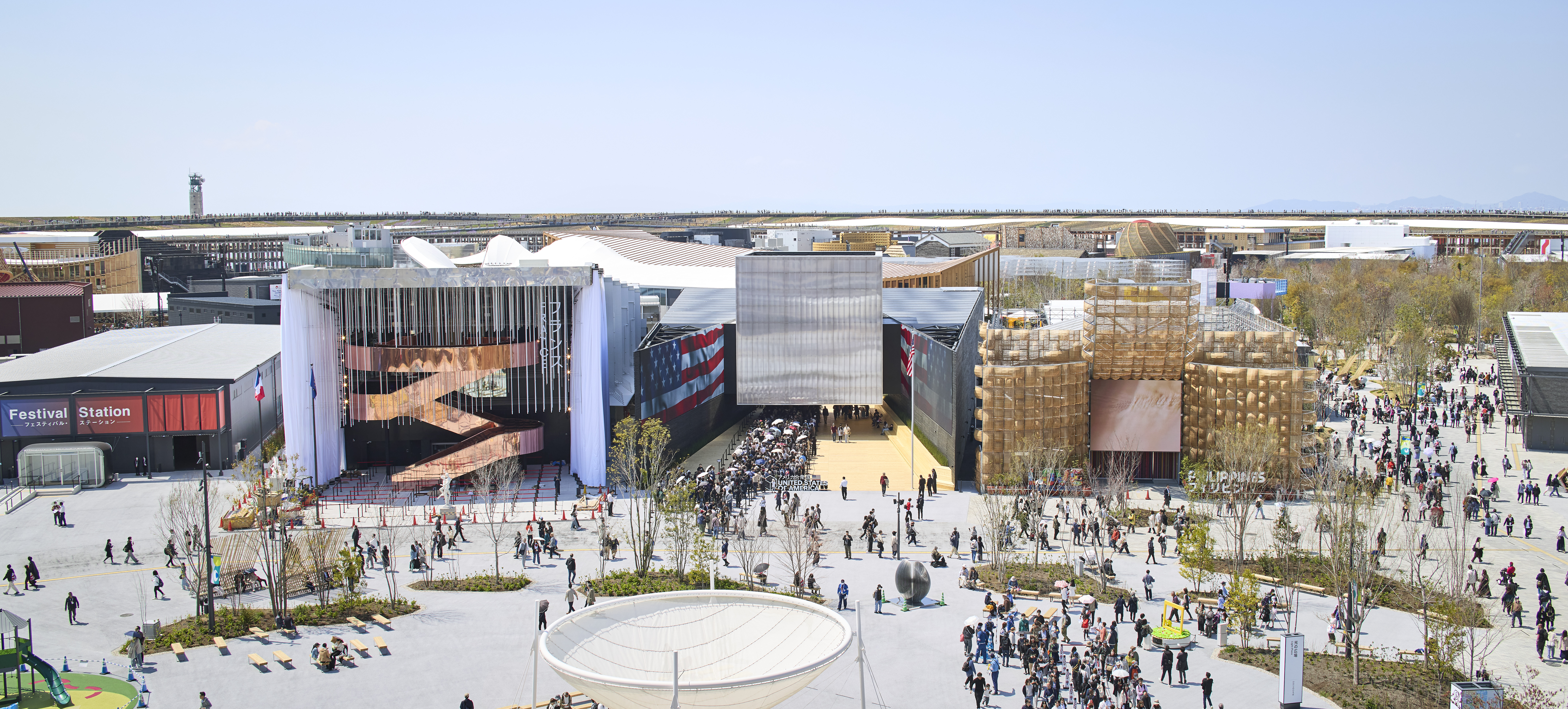 Giant rings! Timber futurism! It’s the Osaka Expo 2025
Giant rings! Timber futurism! It’s the Osaka Expo 2025The Osaka Expo 2025 opens its microcosm of experimental architecture, futuristic innovations and optimistic spirit; welcome to our pick of the global event’s design trends and highlights
By Danielle Demetriou
-
 The new Polaroid Flip unfolds to bring you pin-sharp instant photography
The new Polaroid Flip unfolds to bring you pin-sharp instant photographyPolaroid announces the Flip, an instant camera that blends its evergreen film technology with better results and more control
By Jonathan Bell
-
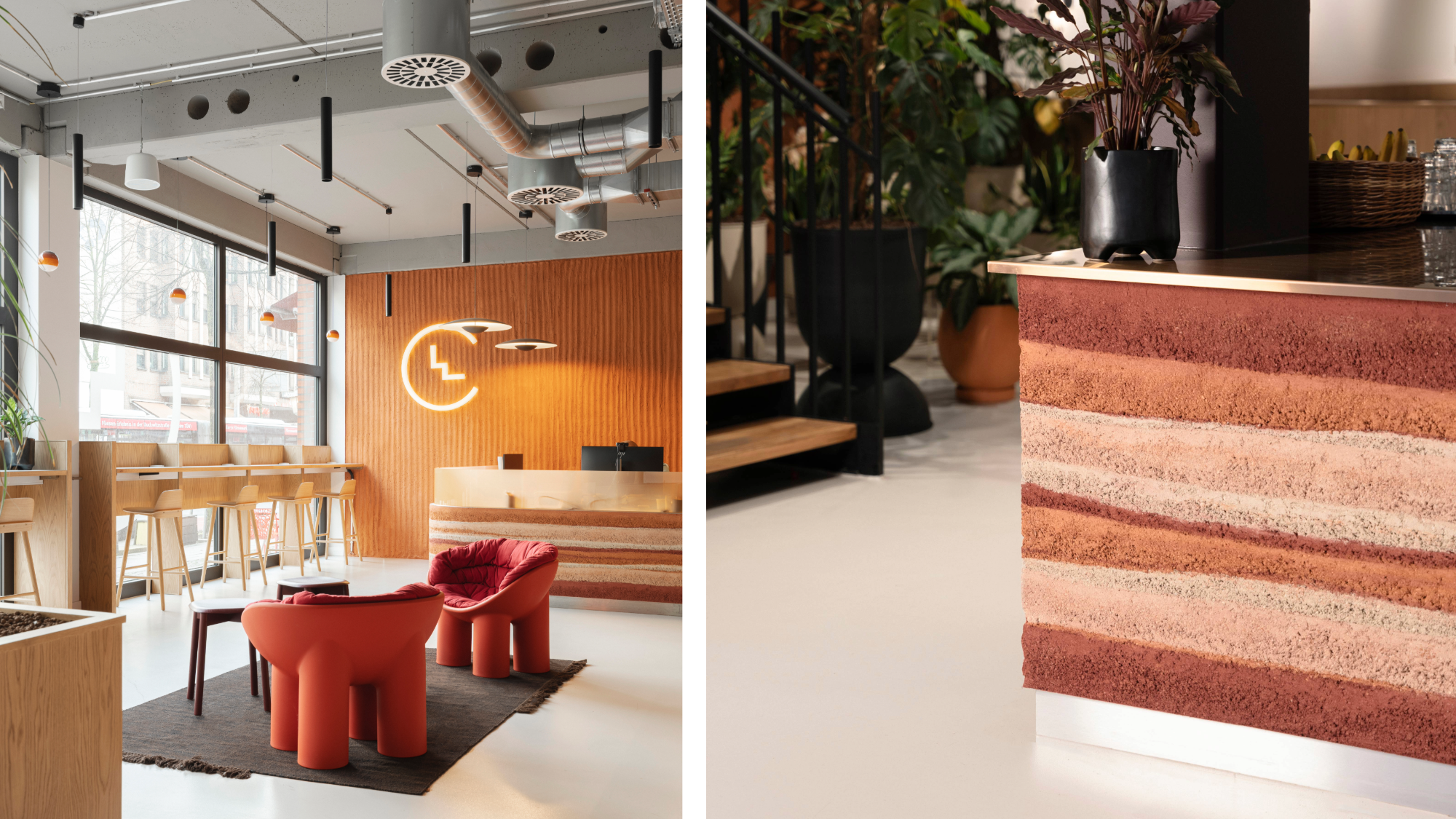 Step inside Clockwise Bremen, a new co-working space in Germany that ripples with geological nods
Step inside Clockwise Bremen, a new co-working space in Germany that ripples with geological nodsClockwise Bremen, a new co-working space by London studio SODA in north-west Germany, is inspired by the region’s sand dunes
By Léa Teuscher
-
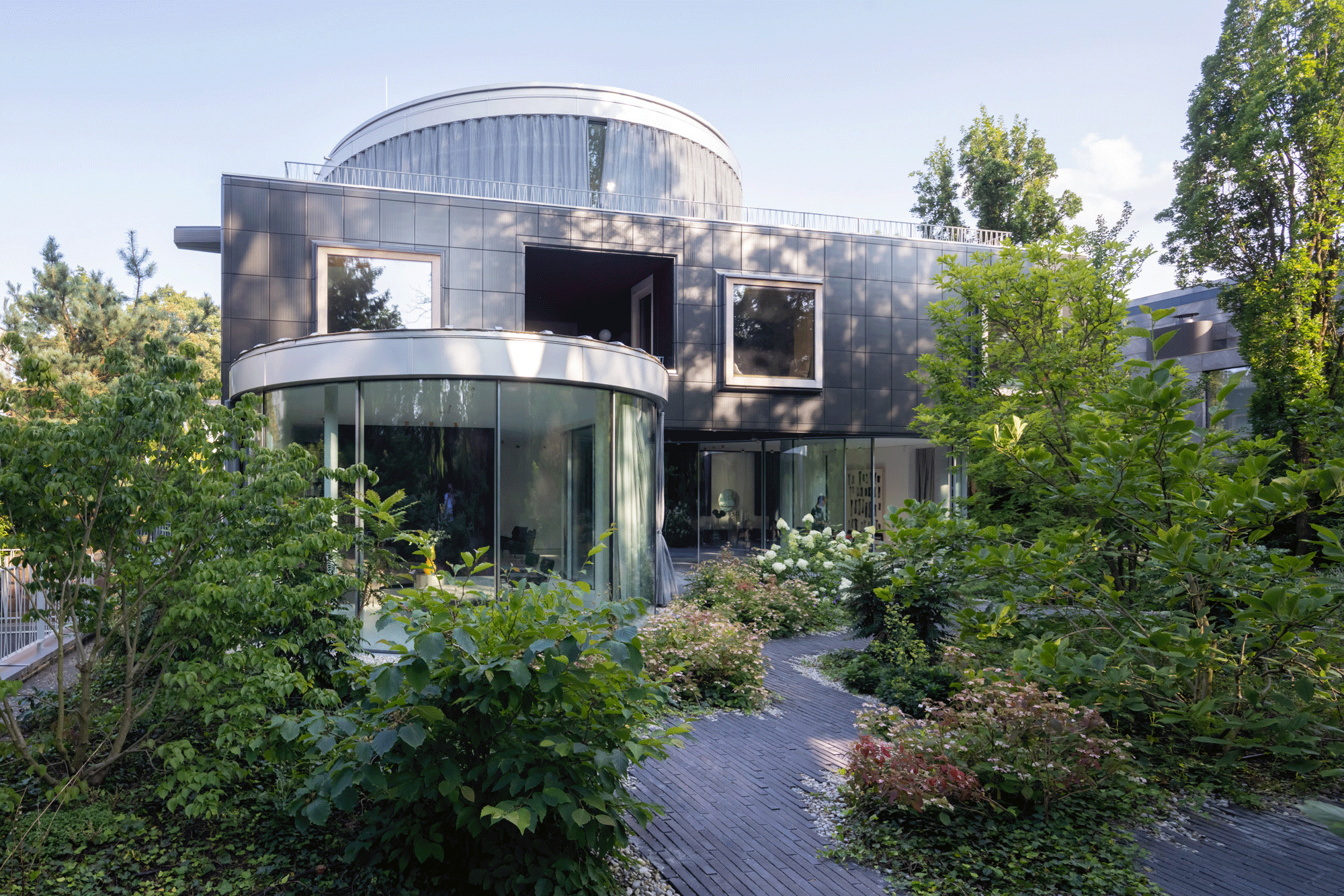 Join our world tour of contemporary homes across five continents
Join our world tour of contemporary homes across five continentsWe take a world tour of contemporary homes, exploring case studies of how we live; we make five stops across five continents
By Ellie Stathaki
-
 A weird and wonderful timber dwelling in Germany challenges the norm
A weird and wonderful timber dwelling in Germany challenges the normHaus Anton II by Manfred Lux and Antxon Cánovas is a radical timber dwelling in Germany, putting wood architecture and DIY construction at its heart
By Ellie Stathaki
-
 A Munich villa blurs the lines between architecture, art and nature
A Munich villa blurs the lines between architecture, art and natureManuel Herz’s boundary-dissolving Munich villa blurs the lines between architecture, art and nature while challenging its very typology
By Beth Broome
-
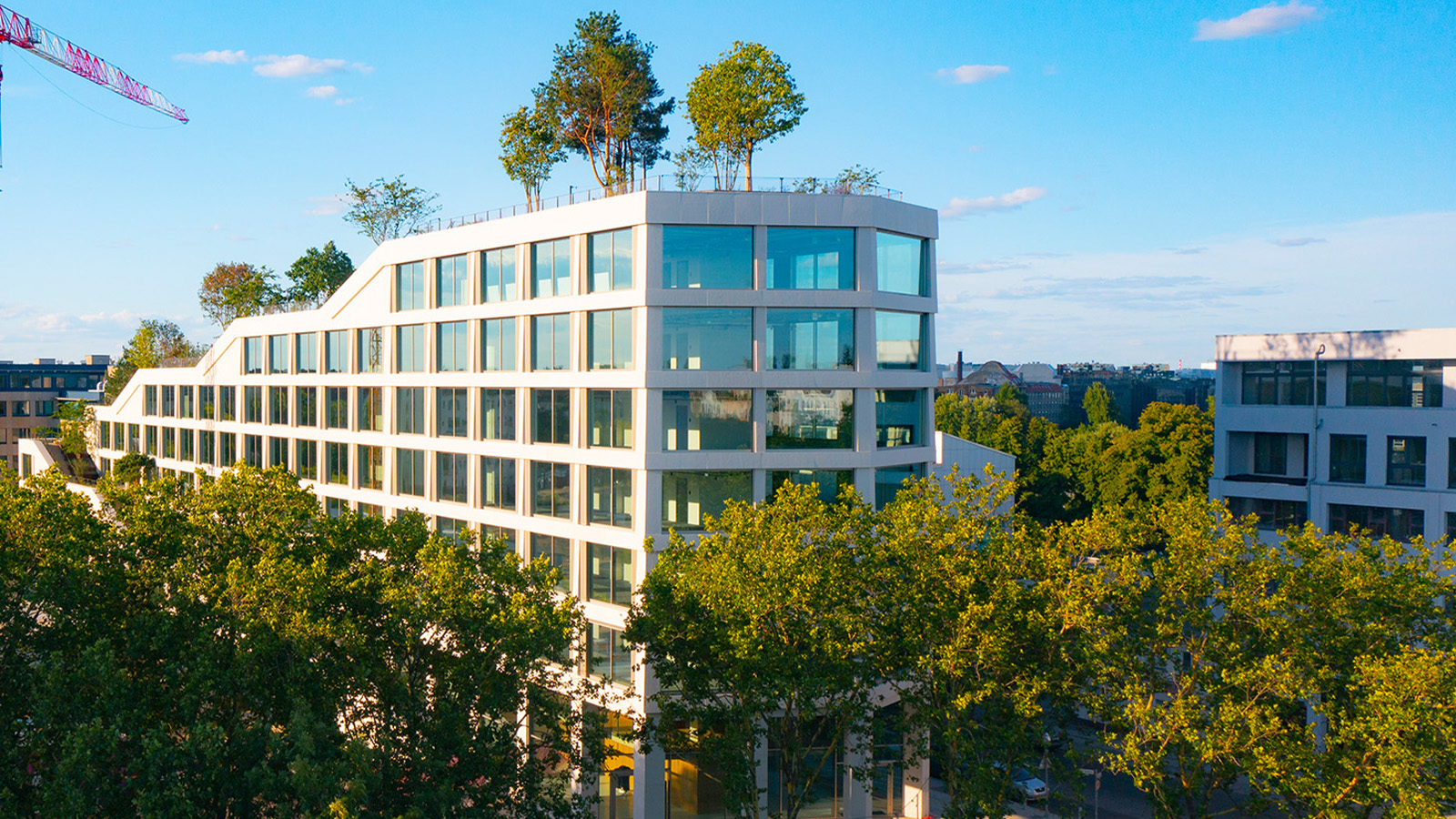 A Berlin park atop an office building offers a new model of urban landscaping
A Berlin park atop an office building offers a new model of urban landscapingA Berlin park and office space by Grüntuch Ernst Architeken and landscape architects capattistaubach offer a symbiotic relationship between urban design and green living materials
By Michael Webb
-
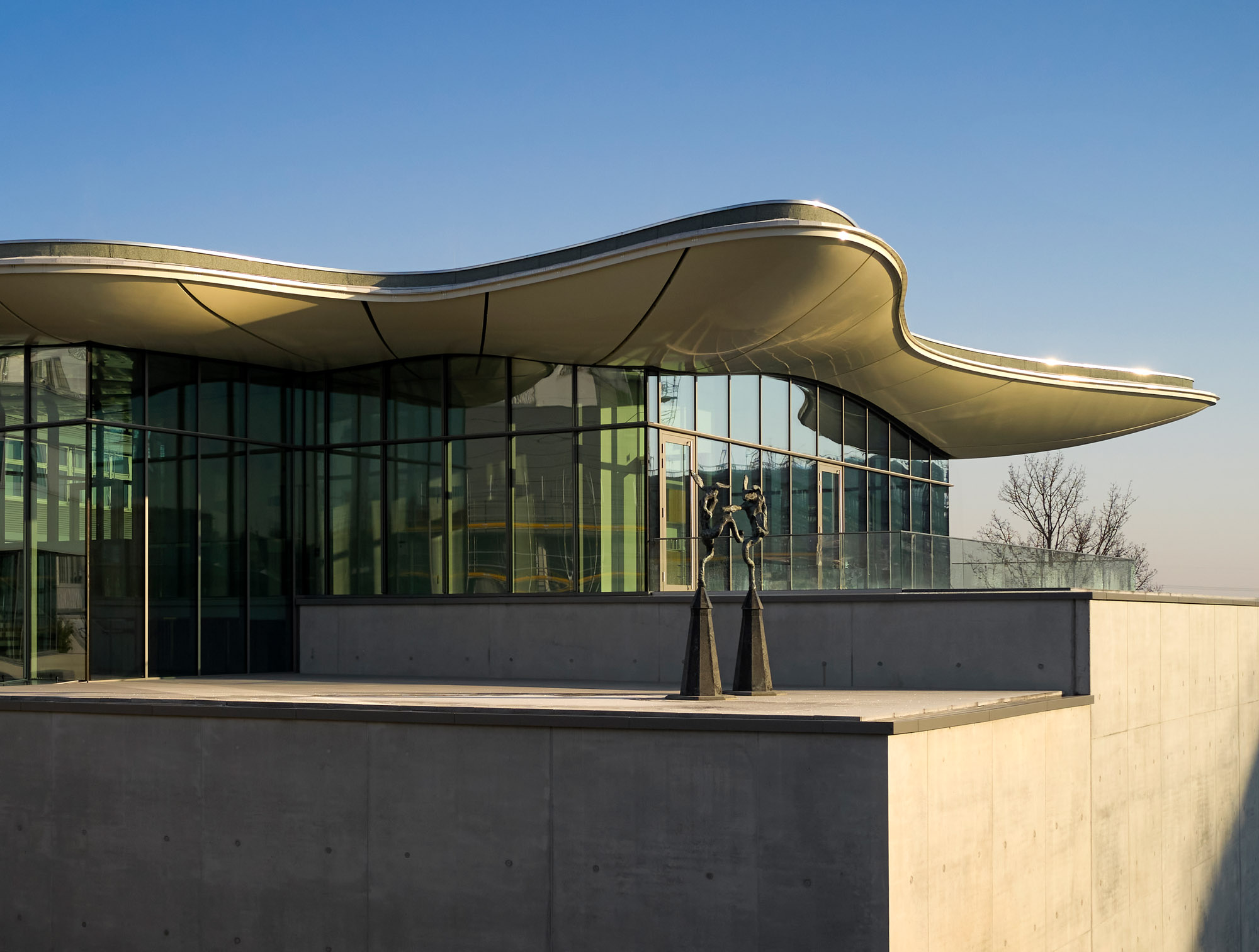 Private gallery Stiftung Froehlich in Stuttgart stands out with an organic, cloud-shaped top
Private gallery Stiftung Froehlich in Stuttgart stands out with an organic, cloud-shaped topBlue-sky thinking elevates Stiftung Froehlich, a purpose-built gallery for the Froehlich Foundation’s art collection near Stuttgart by Gabriele Glöckler
By Hili Perlson
-
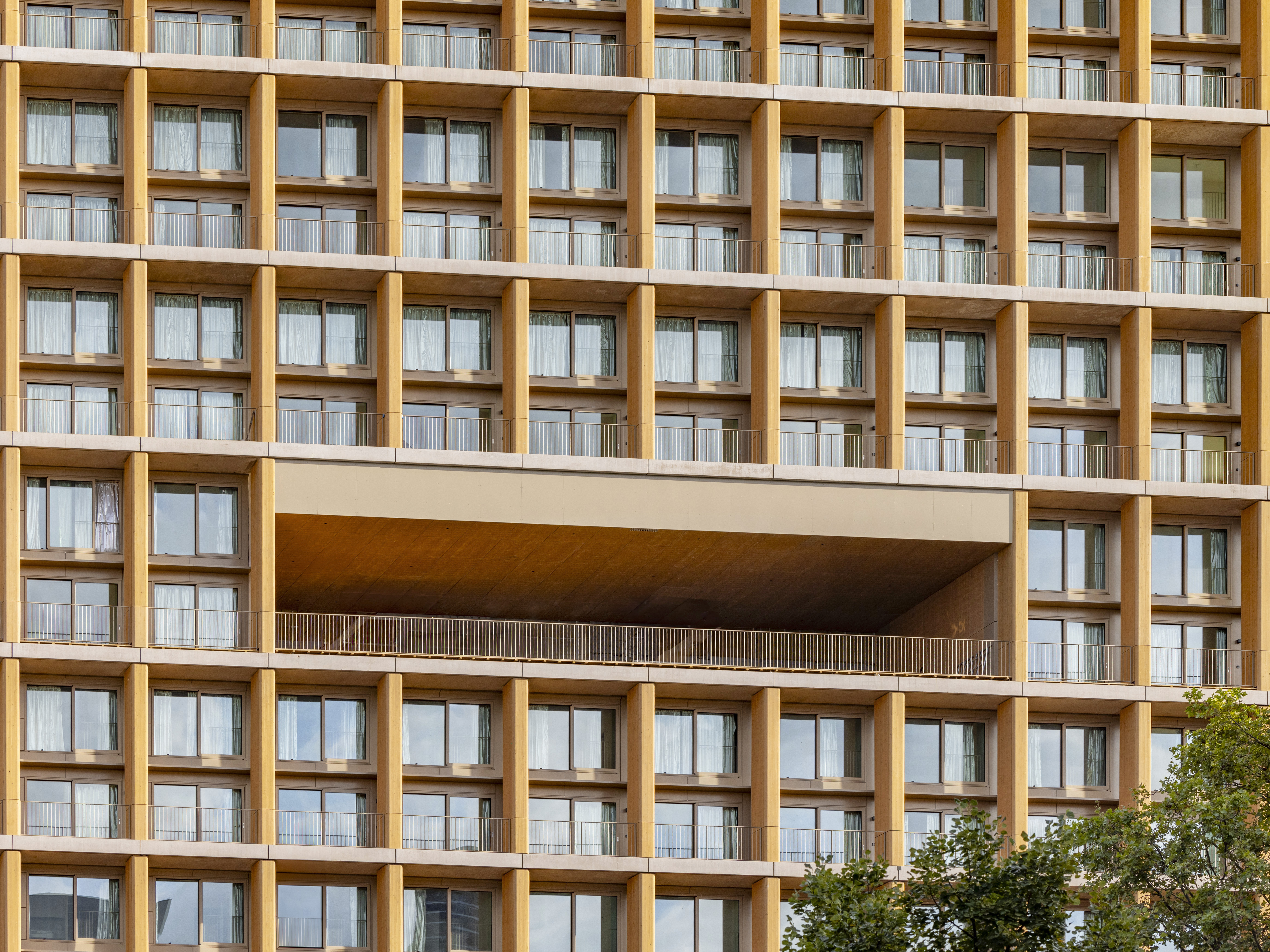 Explore wood architecture, Paris' new timber tower and how to make sustainable construction look ‘iconic’
Explore wood architecture, Paris' new timber tower and how to make sustainable construction look ‘iconic’A new timber tower brings wood architecture into sharp focus in Paris and highlights ways to craft buildings that are both sustainable and look great: we spoke to project architects LAN, and explore the genre through further examples
By Amy Serafin
-
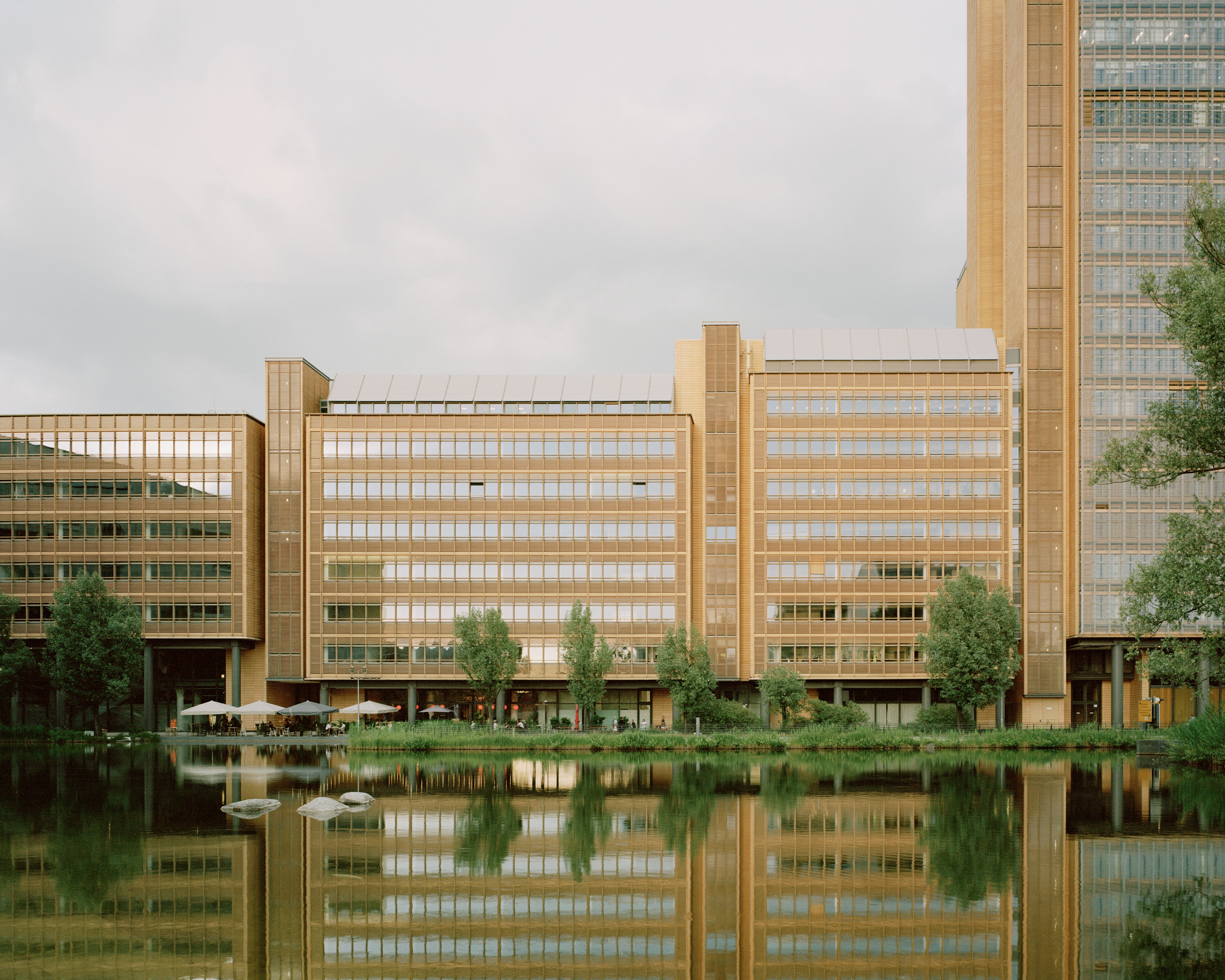 A walk through Potsdamer Platz: Europe’s biggest construction site 30 years on
A walk through Potsdamer Platz: Europe’s biggest construction site 30 years onIn 2024, Potsdamer Platz celebrates its 30th anniversary and Jonathan Glancey reflects upon the famous postmodernist development in Berlin, seen here through the lens of photographer Rory Gardiner
By Jonathan Glancey